 In this issue: Anne E. Johnson riffs on bass great Marcus Miller and one of music’s most legendary figures: Johnny Cash. Tom Gibbs looks at new and reissued music from Rush, Jason Isbell, Dire Straits and Shostakovich. Professor Larry Schenbeck smiles over four Figaros. Roy Hall thinks about smuggling. Dan Schwartz notes the beautiful ordinariness of the band Elbow. John Seetoo continues his series, Songs of Praise from Unlikely Artists.
PS Audio has launched a new record label! Octave Records is here. John Seetoo does an interview with mastering maestro Steve Hoffman. Rich Isaacs’ third installment on Italian progressive rock features Sensations’ Fix and Arti & Mestieri. Wayne Robins basks in a Pacific Breeze of Japanese pop. J.I. Agnew concludes his Q & A on vinyl polarity. Jay Jay French realizes it’s never too late to start over. Ken Sander hangs with Labelle. The issue wraps up with cartoonist James Whitworth taking a stand, a tangerine dream and Bonnie bringin’ it.
In this issue: Anne E. Johnson riffs on bass great Marcus Miller and one of music’s most legendary figures: Johnny Cash. Tom Gibbs looks at new and reissued music from Rush, Jason Isbell, Dire Straits and Shostakovich. Professor Larry Schenbeck smiles over four Figaros. Roy Hall thinks about smuggling. Dan Schwartz notes the beautiful ordinariness of the band Elbow. John Seetoo continues his series, Songs of Praise from Unlikely Artists.
PS Audio has launched a new record label! Octave Records is here. John Seetoo does an interview with mastering maestro Steve Hoffman. Rich Isaacs’ third installment on Italian progressive rock features Sensations’ Fix and Arti & Mestieri. Wayne Robins basks in a Pacific Breeze of Japanese pop. J.I. Agnew concludes his Q & A on vinyl polarity. Jay Jay French realizes it’s never too late to start over. Ken Sander hangs with Labelle. The issue wraps up with cartoonist James Whitworth taking a stand, a tangerine dream and Bonnie bringin’ it.
Loading...

Issue 113

Peonies en Regalia
 In this issue: Anne E. Johnson riffs on bass great Marcus Miller and one of music’s most legendary figures: Johnny Cash. Tom Gibbs looks at new and reissued music from Rush, Jason Isbell, Dire Straits and Shostakovich. Professor Larry Schenbeck smiles over four Figaros. Roy Hall thinks about smuggling. Dan Schwartz notes the beautiful ordinariness of the band Elbow. John Seetoo continues his series, Songs of Praise from Unlikely Artists.
PS Audio has launched a new record label! Octave Records is here. John Seetoo does an interview with mastering maestro Steve Hoffman. Rich Isaacs’ third installment on Italian progressive rock features Sensations’ Fix and Arti & Mestieri. Wayne Robins basks in a Pacific Breeze of Japanese pop. J.I. Agnew concludes his Q & A on vinyl polarity. Jay Jay French realizes it’s never too late to start over. Ken Sander hangs with Labelle. The issue wraps up with cartoonist James Whitworth taking a stand, a tangerine dream and Bonnie bringin’ it.
In this issue: Anne E. Johnson riffs on bass great Marcus Miller and one of music’s most legendary figures: Johnny Cash. Tom Gibbs looks at new and reissued music from Rush, Jason Isbell, Dire Straits and Shostakovich. Professor Larry Schenbeck smiles over four Figaros. Roy Hall thinks about smuggling. Dan Schwartz notes the beautiful ordinariness of the band Elbow. John Seetoo continues his series, Songs of Praise from Unlikely Artists.
PS Audio has launched a new record label! Octave Records is here. John Seetoo does an interview with mastering maestro Steve Hoffman. Rich Isaacs’ third installment on Italian progressive rock features Sensations’ Fix and Arti & Mestieri. Wayne Robins basks in a Pacific Breeze of Japanese pop. J.I. Agnew concludes his Q & A on vinyl polarity. Jay Jay French realizes it’s never too late to start over. Ken Sander hangs with Labelle. The issue wraps up with cartoonist James Whitworth taking a stand, a tangerine dream and Bonnie bringin’ it.
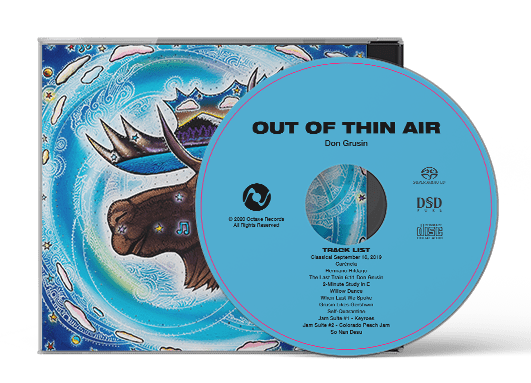
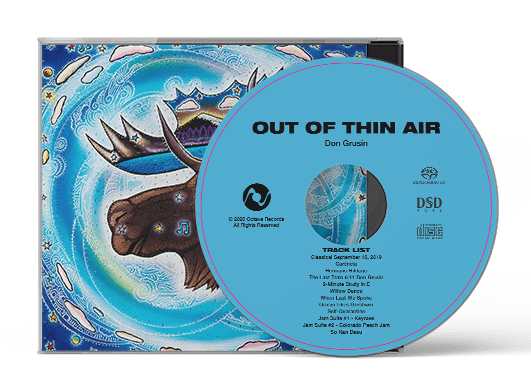
Introducing Octave Records: Audiophile Sound, Benefiting Musicians

Hope you don’t mind if I put on my proud-family-member hat here, to announce that PS Audio has just launched a new record label, Octave Records. As you might expect, Octave is dedicated to audiophile-quality sound – but the label is also doing something unique in terms of artist compensation.
Octave is covering 100% of all studio, mixing, mastering, production, distribution and marketing expenses – so that artists may directly share in retain sales revenues. The artists will also retain ownership of their music. The label’s intent is to give artists a creative as well as financially supportive environment.
Octave Records’ first release is Out of Thin Air by musician/composer Don Grusin. It’s a jazz-tinged solo piano recording, now available as a limited-edition two-disc set with a DSD pure stereo and multichannel hybrid SACD, plus a DVD data disc containing hi-res stereo 192kHz/24-bit PCM and DSD files.

Gus Skinas is the recording and mastering engineer behind Octave Records and its studio, located in PS Audio’s Boulder, Colorado facility. He’s worked on hundreds of recordings from the Rolling Stones to Nat King Cole. We took the opportunity to talk about the technology and philosophy behind Octave and Gus’ approach to recording, and ask Don Grusin for his thoughts.
Frank Doris: What kind of recording and mastering equipment are you using?
Gus Skinas: We’re using the Sonoma DSD system. One part of it is a recorder, and the other part is a DSD processor. The recorder can be used for up to 32-track recording. We have that hooked to a Studer analog mixing console. If we’re recording here in Boulder we’ll generally go direct into the recorder using Forsell mic preamps, and use the Studer to mix. [If recording on location, Gus takes the Sonoma units with him – Ed.]

The other part of the Sonoma system is a DSD signal processor where you can mix and do dynamic processing, all at the DSD sample rate. I think the important thing is that you stay at that high sample rate and if you do that, the system lets you do all your processing at that [native] rate and it doesn’t sound “digital.” It sounds very authentic and there’s an emotional connection.
The Sonoma recorder sounds, and more importantly it feels like it’s going to analog tape. If we’re going to keep this analog feeling, we have to do pretty much everything in the analog domain (other than the initial DSD recording).
FD: Don, What was the inspiration for Out of Thin Air? How did you go about composing it?
Don Grusin: I wanted to make a statement with our first recording in my new Moose Sound studio. Also, I wanted to explore the acoustics of the studios and work with [Five/Four Productions recording engineer] Robert Friedrich and Gus, super-pro guys.
I’ve always been impressed by my heroes, and wrote a theme for them, “Keyroes,” on the record. My favorite players are Herbie Hancock, Keith Jarrett, Oscar Peterson, Bill Evans, Marian McPartland, Art Tatum, Thelonious Monk, my brother Dave Grusin and maybe most importantly Joe Zawinul if I had to choose one. And then the new guys like Russell Ferrante, Alan Pasqua, Mitch Forman, Eliane Elias, Otmaro Ruiz, Brad Mehldau – there are so many I admire! I’m listening now to Arthur Rubenstein doing all the Chopin catalogue and am newly-amazed at his sense of touch and physical grasp of the piano, a not very forgiving instrument played at that level. FD: What would you call your music – inspired by jazz, life experiences, or something else? DG: After Paul McGowan and Gus Skinas suggested I do this project up here in the mountains, I started thinking and writing, influenced by the beauty of the place. In a couple of cases I drew on music that I had already written or recorded on previous albums; for example, “Carência” and “The Last Train.” For a time I didn’t want to be called a jazz musician but when I was [a young kid] in school, when learning classical, the girls in the class kicked my butt! So I went in a different direction. I’m not a trained musician – I play all street stuff. Inspiration for me comes from so many years traveling to other countries, living in LA and in Mexico, the ocean, and the amazing lineup of music friends I’ve made through music. Also, their friends who run restaurants or gas stations, or radio people, the attorneys, the movie guys – it all adds to a hefty collection of experiences which almost unconsciously guide my playing and composing. It’s like having a world of consultants from every corner and every part of life. FD: Gus, how did you record the Out of Thin Air album? GS: We recorded it at Don’s Moose Sound facility, live to stereo. We also recorded it live to surround for SACD. Robert did the recording and mixing and I did the editing and mastering. Don has a seven and a half-foot Yamaha C7FII grand piano. We used three Sanken CO-100K mics near the piano – very high bandwidth; they go up to 100 kHz. We used a stereo ribbon AEA R88 mic to get the room sound, both for the surround-sound version and we also added some of that into the stereo mix. We ran the Forsell mic preamps into a tiny little SSL SiX console. Live to stereo. It’s the way records should be made. FD: Did you use any compression or plug-ins? GS: We had a compressor inserted in case of overloads, but it never triggered. Our philosophy [at Octave] is that we’re going to be recording pretty much everything using DSD recorders and DSD and analog signal processing. Fairly simple projects in terms of the complexity of the production. We have a small main recording space but we can put the drums out into the warehouse [adjoining the main studio] and get this giant big warehouse sound for the drums. It sounds really great with the natural reverb in the warehouse. We’ll do that on the weekends or evenings when the factory’s not in operation. Mostly when we record here we’ll go through the Forsell or Grace mic preamps straight to the [Sonoma] machine. We try to stay away from compression but if we need it the compressors in the Studer console are very good. I’m monitoring using three PS Audio BHK Mono 300 amplifiers, power conditioners and a DirectStream DAC to monitor the Red Book CD when mastering. In the control room, we are monitoring on ATC-SCM50 loudspeakers, and in the mastering room, we are monitoring on the Sony ES SS-M9ED speakers that go up to 100 kHz. FD: What do you think of the “loudness wars” and all that? GS: I’m not a part of it. We don’t participate in that at all. Pop music…it’s what all the pop mastering engineers are doing. But it’s not as bad as it used to be. If it’s not loud enough, just turn up the volume! I just want it to sound natural. I want it to sound real. And the whole thing with DSD is, it sounds, and more importantly feels authentic. With PCM [digital] you can have something that sounds great, but it doesn’t necessarily feel authentic. There’s something wrong with it, your brain knows that there’s something wrong with it, and it kind of pushes you away a little bit. I believe that the authenticity is directly related to the sample rate. DSD is in the millions. PCM is in the thousands. The common belief is that we can only hear sound between 20Hz and 20kHz. I’m not sure this is correct. I believe we perceive sound much further up even if we can’t hear a tone above 20 kHz. And we definitely perceive [problems] in the timing of things. These might be very small and pretty much unmeasurable but we do perceive them. And it affects the believability of what we hear. I believe these timing problems are greater as the sample rate goes lower. The higher the sample rate, the closer we get to analog. I want to mention something John Hiatt said after we finished recording Master of Disaster. An interviewer asked him, “why do you go through the trouble to record to this new technology when you could just run Pro Tools and be done with it?” [Pro Tools is an industry-standard computer recording program – Ed.] Hiatt replied, “what the ear hears, the heart must believe.” To me, that’s it in a nutshell! FD: Don, what was it like to record the music? DG: Such great fun. The ears of both Gus and Robert are astounding. They would point out something and describe what they heard, and only then in some cases could I “hear” it. I’ve recorded with many giant engineers including Roger Nichols and Don Murray, but this one was a new experience for me. And to [be able to] play freely, enabled me to get “out of body and mind” at times and just let the essential “artist” part of me come through. It’s a feeling I really like and it doesn’t always happen that way. FD: Gus, for future releases are you going to stick to this kind of live-in-the-studio, minimalist kind of recording concept or are you open to, say a Steely Dan kind of big production thing? GS: We’re not doing heavily processed and produced projects. It’ll be pretty much simple recordings of small bands, duos, trios, maybe some jazz quartets, stuff like that. Good musicians and very simple micing and recording to DSD. We want to keep that believability thing in everything we do.
 A view from the Yamaha C7FII piano.
A view from the Yamaha C7FII piano. A view from the Moose Studios control room.
A view from the Moose Studios control room.


Vinyl and Absolute Polarity: Q&A, Part Two
In Part One of this dialog between J.I. Agnew and reader/engineer Bob Lehman (Issue 112), they delved into the technical aspects of vinyl record manufacturing and absolute polarity. The dialog continues here. It’s longer than our usual article length, but the complexity of the subject requires going into detail – including addressing Einstein’s theory of relativity!
Bob Lehman: So, are these transducers [microphones, tape recorder heads, phono cartridges and disk cutter heads] in some way responding to the derivative of the air pressure, magnetic field, or physical displacement phenomena?
J. I. Agnew: For tape heads, e = N(dφ/dt). For phono cartridges, e = ds/dt, but internally this just translates to e = N(dφ/dt), since any displacement of the stylus causes the magnet or coil to move relative to each other, thereby changing the flux linking the coil turns, which generates an EMF (electromotive force or signal voltage) whose magnitude depends on the number of turns (N) of the coil and the flux swing (this applies the same way to moving magnet and moving coil cartridges, with slight variations for moving iron cartridges but it can be considered equivalent).
BL: If true, would it really matter in any practical way, since, with the possible exception of the case of [a DC signal], under the principle of the Fourier theorem/series, any complex waveform can be expressed as the sum of the integral pure sine wave multiples of its fundamental frequency?
JIA: Both in mathematical terms (a Fourier transform) and in practical measurable/audible terms, although the frequency range of interest may be adequately covered (down to 10 Hz or so for vinyl records), the fact that the system response does not extend down to DC will cause issues with the phase response. In a mathematical Fourier transform, a complex wave is “transformed” into multiple sine waves, one for each frequency component of the original complex wave, each at a certain amplitude and with strictly defined phase relationships between them. If we attempt to reconstruct the original complex wave from these sine waves, at the correct amplitudes, but with altered phase relationships, the result would be a different waveform!
Errors at subsonic frequencies, such as 10 Hz, can cause phase anomalies well into the audible range, greatly reducing the system resolution and the realism in the low frequency range. It is worth remembering that the lowest C note produced by a 32-foot organ pipe has a fundamental frequency of 16.351 Hz and the low A on a piano has a fundamental frequency of 27.5 Hz.
BL: If the [above] assumptions are true, is that taken into account in any way in the design of the related mechanical, electrical and magnetic equipment? [Conversely], a DC signal applied to a DC-coupled electromagnetic loudspeaker can and will push the diaphragm in one direction and it will stay there, and if the listening room is 100% air-tight, a constant air pressure increase or decrease will be produced in it. Ah, yes, finally, we get to the connection of these questions to absolute polarity! I assume that a totally DC-coupled electrostatic loudspeaker would do the same thing, but I don’t believe that any exist, as most are transformer-coupled to the driving amplifier. Electrostatic headphones do of course exist, and are often directly driven by solid-state or tube drivers without coupling transformers, so I’m guessing that they could produce a constant diaphragm displacement if driven by a DC signal, if they are still otherwise fully direct-coupled.
JIA.: Most transducers and electronics used in sound recording and reproduction are designed to have cut-off frequencies low enough as to be effectively insignificant. A 0.5 Hz cut-off frequency on a microphone preamplifier is low enough to not affect frequency or phase in the audible range. The 10 Hz mass/compliance resonance of the tonearm and cartridge is not as low as would be ideal for perfect phase response, but is essential to filter out unwanted sounds and is well manageable with good design, to the extent of being almost insignificant on its own. It does become significant, however, as soon as someone carelessly designs a second 10 Hz cut-off into an amplifier or preamp. Anything intended for use with a turntable must have its cut-off at a much lower frequency.
The worst offenders are usually the loudspeakers, which very rarely do much below 30 Hz, with most low-cost bookshelf speakers having cut-off frequencies as high as 80 – 100 Hz! Needless to say, with such loudspeakers, any effects from the 10 Hz cut-off of the turntable would be entirely masked.
Loudspeakers with responses extending below 20 Hz and very respectable phase responses do exist, and they tend to be large and expensive. They are, however, absolutely essential in professional mastering facilities, where low-frequency phase error effects must be clearly audible to be adequately dealt with. In the current state of the industry, with minimal recording budgets and only a small percentage of the audience in possession of big loudspeakers that can actually reproduce low frequencies, very few recording and mastering facilities are actually equipped with proper monitoring facilities. This is not just limited to equipment design, but also studio design and the mentalities prevalent in the recording industry. The gap between good sound and horrible sound is widening!
Regarding DC pressurization, following on from the discussion in a previous question, while it could be theoretically possible, it would not necessarily be unconditionally beneficial to the listening experience. From an absolute performance standpoint, the electronics would probably all benefit from a response down to DC. Most transducers would not, as the microphones then would be acting more as barometers, given that the static atmospheric pressure due to gravity is much greater than the small modulations of air pressure that we perceive as sound. The cartridges would then act as displacement sensors, tape heads would act as compasses, and so on. It would be difficult to exclude the “environment” information, but otherwise keep the response to DC, to ensure a perfect phase response. There are much more practical ways of preserving a good phase response without needing everything to work down to DC, such as by careful design of cut-off points in transducers and by considering the entire recording and reproducing chain as one system, in which each individual component must work in harmony with all other components.
BL: What about a tape head and recording tape if everything is direct coupled (theoretically, even if not usually implemented that way). If presented with a DC signal, would the tape head create, and would the tape record, a constant magnetic field?
JIA: Tape itself is just ferromagnetic particles (on a substrate). In the presence of a permanent magnetic field, tape will become permanently magnetized (DC magnetization). This could even be done without a tape machine, just by bringing a permanent magnet close to the tape. It can also be done with an electromagnet, with or without a tape machine. The recording head is essentially an elaborate electromagnet, mounted to a tape machine. Recording DC magnetization onto tape is as simple as hooking up a battery to the recording head with the tape running (or even stationery, which would just magnetize the part of the tape in front of the head). DC-coupled recording electronics will achieve the same. It is simple to record DC to tape, but it cannot be played back with Faraday-principle repro heads. Such a tape recording could be played back with Hall-effect devices, but to no sonic benefit. In fact, most probably to great sonic detriment.
BL: And the same question [about presenting DC signals to] a disc cutter lathe – again, if 100-percent direct-coupled (even if in practice things aren’t usually implemented that way), would the cutter produce a “constant” displacement cut in the lacquer disc? (Aha, yes, your comments about viewing the cut disc with a microscope were what triggered these questions, at least at this time – I’ve wondered about them for a long time, since learning in college that the output of a coil in the presence of a magnetic field (e.g., a phono cartridge) is a function of the first derivative of the magnetic field, as opposed to all of the electronic components in the signal chain.
JIA: There are in fact examples of fully DC-coupled disk recording lathes, where even the cutter head was mechanically DC-coupled to the disk. A direct current to the drive coils would increase the depth of cut. Therefore, such a system could produce a constant amplitude (constant displacement) cut from DC up until you fry the coils at some high frequency as a result of gross thermal overload while trying to accelerate the cutting stylus to the velocity of light!
This is a pretty hard boundary, since even if we could create a cutter head which would not suffer from thermal overload at extreme velocities, as the cutting stylus would approach the velocity of light, it would suffer a relativistic mass increase (as per Albert Einstein’s paper, titled “On the Electrodynamics of Moving Bodies” published in 1905) which would most probably result in somewhat reduced output from the head, assuming that force and acceleration are not limited. (Note: Disregarding the fact that such velocities could never be accurately represented on 33-1/3 or 45rpm 12-inch records, electromagnetic induction effects only remain dominant while the velocity is much less than that of light. If the moving system of a phono cartridge would be made to approach the velocity of light, displacement current effects would need to be considered and very strange things would probably happen. Do not try this at home!)
Either that or the cutting stylus would travel in time, which might cause minor glitches in the time response of the system (or a gap in the time-space continuum).
BL: Again, if any of this matters, is it taken into consideration in the design of the related recording and/or playback equipment?
JIA: Playback turntables are never DC-coupled to the disk due to the existence of a tonearm (this applies the same to pivoted and tangential arms). But a lot of research went into where to place the mass/compliance resonance of the system, for the least amount of audible side effects.
Compared to turntables, there were very few manufacturers of disk recording lathes and only three or four types of cutter head suspension designs. The early ones were actually DC-coupled to the disk and had an excellent phase response, but were not easy to control for groove depth using the disk-cutting automation systems of the time. As market forces came to value longer playing duration per side much more than phase integrity, and at a time when very few loudspeakers offering decent low-frequency phase response existed, most of the industry moved to floating cutter head suspensions, where groove depth could be automatically controlled, along with the pitch, to assist with fitting more music onto a record side.
Not only would the buying public get more minutes per side for their money, but they could also have it cheaper! The most popular disk mastering lathes became the ones that were offering automation that allowed a far less experienced operator (read: someone who could be paid much less and be easily replaceable) to cut records, without accidentally destroying the incredibly expensive equipment involved and with a low disk-rejection ratio as well. The machines themselves were no longer designed for best sound, but to best benefit business. Everyone was happy – apart from those who cared about sound quality.
Today, 35 years after the commercial mass-manufacturing of disk mastering lathes ceased, the surviving systems in active use are all heavily modified with custom parts, a bit like hot rods! Some rebuilders went for maximum automation, others aimed for lowest cost, and a few went for ultimate sound quality. In this last category, all of the aforementioned issues are taken into consideration and improved parts are custom-made as one-off items, at considerable expense. This is a micro-world of its own; no major manufacturers want anything to do with this, as by now this kind of specialization relies entirely on a very few remaining, highly skilled and entirely irreplaceable individuals, complicated and time-consuming precision machining operations (which often cannot be automated) and a very small but rabidly dedicated niche market.
BL: Does the RIAA curve take any of this into account, or is that purely to manage the practicality of which frequencies can be cut at which amplitudes without overheating the cutting head, eating up too much groove spacing or causing too much pre- or post-echo, [along with] introducing too much noise, causing the playback stylus to jump out of the groove, [and so on]? Or might the recording and playback processes normally be complementary in some way [from a mathematical standpoint] such that, if derivatives are involved, an integration somewhere complements a derivative elsewhere?
 The RIAA curve. Courtesy of Wikimedia Commons.
The RIAA curve. Courtesy of Wikimedia Commons.
JIA: The RIAA curve only serves to reduce the space requirements the record groove would take up at low frequencies and to improve signal-to-noise ratios at high frequencies. (In other words, the ratio of the intentional amplitude of playback stylus excursion due to groove modulation, versus the unintentional playback stylus excursions while tracing the molecular structure of the disk record material).
The RIAA pre-emphasis causes phase shift at the time of recording and the RIAA de-emphasis causes the exact opposite phase shift. The phase shifts cancel each other out and restore the original relative phase relationship. That said, the mathematical differentiation and integration (pre-emphasis and de-emphasis) are indeed complementary, but are entirely due to electronic circuitry, implementing the RIAA time constants, and are unrelated to the derivatives discussed as pertaining to transducers.
BL: When looking at a stereo disc from the front of the playback equipment (i.e., at the front of the phono cartridge), which of the two groove walls correspond to the left and right channels? You alluded to this in discussing that the cutting lathe microscope can be looking in one or the other direction, thereby possibly reversing the groove sides from what one might assume, but you didn’t define which channels are on which side from either orientation.
JIA: Looking at the front of the playback cartridge (not the wiring side), the left channel is towards the spindle, on the left groove wall, and the right channel is towards the edge, on the right groove wall.
BL: Despite the various existing standards that you cited [in Part One of this article], and the many variances [in these standards], are you in effect saying that, yes, absolute phase differences can be heard, at least under some conditions, but given the typical multiple microphones of different types and the plethora of other equipment used to make almost every recording, and [when you factor] in the disc (or tape) manufacturing chain and the playback equipment chain, there’s “practically” no hope of ever achieving any absolute phase consistency?
JIA: On the contrary, it is not actually that difficult to maintain phase consistency and absolute polarity, when working sensibly and with properly engineered equipment. But it is necessary to verify the operation of all equipment to be used in a professional audio facility and to keep it all properly calibrated and interconnected. Home systems are much simpler and the availability of products by manufacturers known for their high standard of engineering certainly helps.
BL: And even if there was a completely and rigidly controlled environment for the aforementioned variables, wouldn’t the different microphone distances from different instruments alter absolute polarity anyway, with either the popular “multi-track mono and mixer panning” approach used for most recording or perhaps even the minimalist two- or three-mic “natural” approach that is used for some elite audiophile recordings? (The highly-desired natural stereo imaging for the latter “natural” approach with real-time acoustic music depends mostly on the relative phase differences between the mics as they “hear” the different instruments, vocalists, room/hall ambience, etc., whereas the other approach depends largely on amplitude differences between the stereo channels via the multi-channel mixer pan pots.)
JIA: First and foremost, for a recording engineer to be able to assess the effects of microphone selection and positioning, to decide which technique would best convey the sound to the recording medium, a completely and rigidly controlled environment is an absolute requirement. If the room acoustics and the monitoring system in the studio do not provide adequate resolution of detail, everything else is totally up to good luck. There is no way for an engineer to measure or guess what the monitoring environment does not reveal. Especially when the target audience would be audiophiles with exceptional systems, the studio environment would need to be much more detailed and more revealing than any of the audiophile systems that the record would subsequently be enjoyed on. The engineer, in this case, would also need to have some experience listening to exceptional audiophile systems, to be able to fully appreciate how high the expectations can be.
As for microphone distances, they do affect what is captured, in terms of frequency/phase response, dynamics, reverberation, and stereophonic imaging, so their positioning and careful selection is critical.
Microphones do not only capture the sound from an instrument or ensemble, but also the sound of the room. Changing the position of the microphones or performers by even a few centimeters can make a huge difference.
Using the example of sitting in a concert hall, the sound of the instruments nearest to our ears arrives earlier than the sound of the instruments further away. This adds a sense of depth to the “soundstage” and enhances the sense of width, both in real life and in a reproduced recording. However, in all performance spaces, there are always seats that offer a better overall auditory experience than others. In positioning the microphones for a recording, the intention is usually to find the “best seat” and capture this experience.
When a coincident or spaced pair of microphones (or three as in the technique employed by Decca) are used, the intended absolute polarity is the one that the engineer or producer decided upon as offering the best representation of the performance, through the position of the microphones. It does not necessarily mean that all instruments will always produce an outwards loudspeaker cone motion for a positive pressure increase in front of the instrument! This is irrelevant, since the performance is not enjoyed by placing your head in front of a trombone and a violin at the same time! What matters in this case is the pressure decrease/increase in the hall, where the microphones are positioned.
This should then reproduce, on your system, something resembling what the engineer and producer heard when making the recording, which was presumably intended to sound as close as possible to what they heard in the performance space, prior to setting up any microphones. In multiple-microphone recordings, inaccurate positioning of the microphones relative to each other causes extreme phase cancellations, a confused, unstable stereophonic image and unnatural-sounding instruments. Microphones also need to be very carefully positioned with multi-miked recordings, but the approach is a bit different, since the multiple-microphone approach usually aims to create an experience that was not necessarily there to begin with, instead of just capturing what was there. This can be beneficial in cases where the original performance space’s acoustics are problematic, but when everything is as it should be in the hall, I personally prefer just a pair of microphones.
In rock and pop music, however, additional microphones are sometimes used for effect, to present a larger-than-life soundstage and enhance rhythmic impact. In such cases, the polarity of an individual microphone could be intentionally inverted to create the desired effect. Since this is done to create an artificial reality that was never really there, the “correct” absolute polarity is again whatever the producer intended, provided that it was possible to properly hear the result while the recording was being monitored in the studio.
If we all had exactly the same living room (and drove identical cars) with exactly the same loudspeakers in them, in exactly the same position, then we could probably skip the studio environment and just work on recordings in any living room, since we would hear exactly the same result that everyone else would also hear in their own living room.
If, in such a world, we wouldn’t have gotten arrested by the secret police and if music wouldn’t have been forbidden, along with reading, thinking, or defecting to the other side, where the sheer diversity in living rooms and loudspeakers would necessitate completely and rigidly controlled environments in which recordings were to be monitored. No need to prohibit reading, thinking or defecting. Market trends would have pretty much rendered the first two obsolete. As for the third, where would you go to? Perhaps this is why space colony concepts were popular with multi-millionaires, although recent global events may make them unpopular again, and hopefully steer things in a different direction, before we all end up having the exact same living room in space!
Header image courtesy of Wikimedia Commons/Evan-Amos.




The Beautiful Ordinariness of Elbow, Part One
Throw those windows wide
One day like this a year would set me right.
…from “One Day Like This”
In ye olden days of 30 years ago, as a writer I would struggle to try to describe music. This was always a thankless task; imagine trying to describe the sheets and clouds of pure sound that comprised György Ligeti’s best work.
But a virtue, as well as a massive liability, of the modern age is YouTube. And YouTube makes this job much easier. I’m talking about attempting to describe the music of Elbow, an approximately 20-year-old band from Manchester, England. Vaguely like Radiohead or Coldplay (as if they’re similar), but not quite – although they manifest a similar melodicism.
Let me begin by sharing the track in which I “discovered” them:
I heard this track on a pretty lousy station while driving in Los Angeles, while channel hopping, and I was fairly riveted. I pulled over to listen and waited to find out who they were – I was that enthralled. It had been years since I had found a band that I liked that much.
Although we have a few friends in common, as they’re from Manchester, what I know about them I’ve mostly found out online, like from Wikipedia: https://en.wikipedia.org/wiki/Elbow_(band).
There’s this, a playlist of an in-studio gig with an orchestra at Abbey Road that blows my proverbial socks off:
httpv://www.youtube.com/playlist?list=PLE8D1D0EBE3C89387
And there’s this live show:
As to whether they’re good musicians or not, they’re certainly good enough to play their music – there’s nothing dazzling here, except the band itself. And who writes it? I’m not going to find out – I’m deliberately keeping it mysterious.
It occurred to me while listening to a few concerts of theirs that are on the YouTubes that in weird ways they remind me of late 1970s Genesis, and Talking Heads at the beginning of the 1980s (and those bands were nothing alike). They’re like Genesis in that, once Peter Gabriel left the band and they turned in a decidedly pop direction, one could sense that they could really play, but quite often they simply didn’t, and left it to the music or to the song to speak for itself (E.G. “Entangled*”, from A Trick of the Tail) – which is a hallmark of maturity, not having to always show “your stuff.” And Elbow demonstrates this maturity even on their early albums, though much more so on the ones from 2008’s The Seldom Seen Kid onwards. But: they also remind me of Talking Heads, circa their (and Brian Eno’s) shockingly brilliant Remain in Light, in that the music is made up of broken-down modules of repeating figures – which sounds real pointy-headed when I write about it, but it’s what I mean.
(*Okay, this is weird. I just found an online radio show and interview, in which singer Guy Garvey says that the one Genesis song that everybody in the band agrees that they like is “Entangled.”)
If you have Roon, you’ll find more contemporary comparisons in their descriptions of the band – to Coldplay, and Talk Talk, and Supertramp, and Superchunk. But this is on their early albums, which were…more conventional? I don’t hear Elbow as a radical band – in fact they’re comfortably un-radical. Their early albums were a bit more conventional (and yes, they have gotten more Elbow-ish in their self-defined sense). The rhythms and arrangements are more spacious and fragmented, and their anthemic-quality has gotten bigger and more ambitious. They’ve evolved from a great worn jacket to a massive comfortable sweater. (As I struggle to describe the music, I take some comfort in the writers that Roon takes their stuff from having just as difficult a time.) Comfortable, familiar music and vocals – that nonetheless are unique and new. And vocalist Guy Garvey has a rough/smooth delivery that’s very comforting and familiar.
If I find any fault with their early albums (which I sometimes do), it’s that the tunes sort of shout “art-rock” without transcending the form, as their later work does – the band has definitely grown as writers/arrangers. (Of course, that’s my taste; you might feel differently.)
In any event, in Part Two, witness me struggle to again describe the indescribable.
Header image courtesy of Wikimedia Commons/Evita wiki.
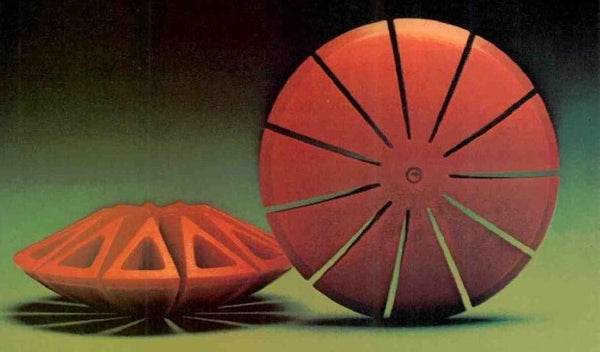
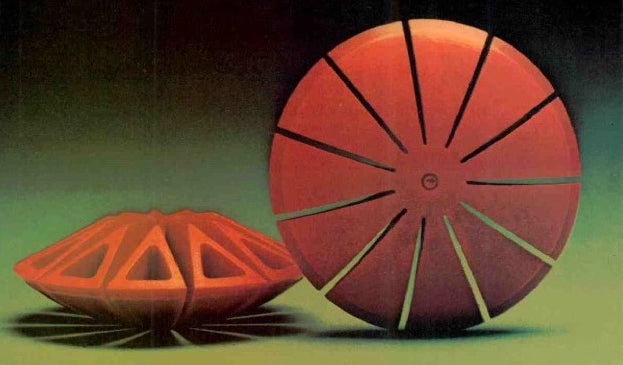
Tangerine Dream

We don't know if this produced uncolored sound or not. From the Museum of the Hard to Believe...er, Audio, October 1977.
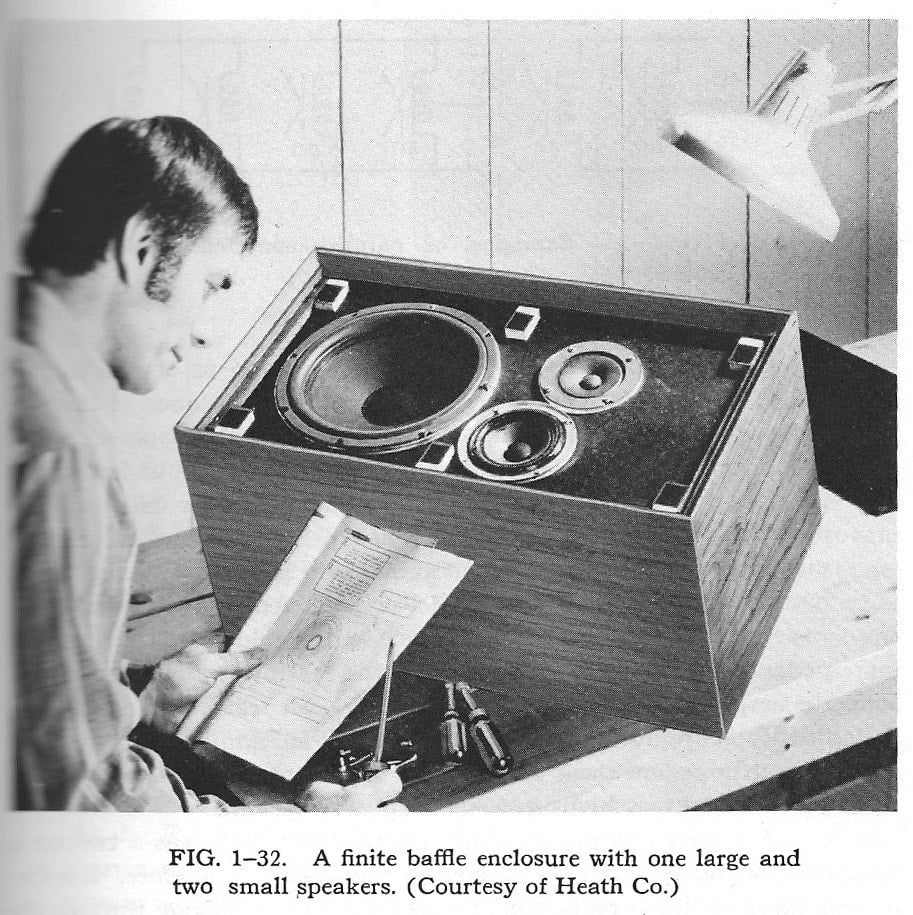
That's one small and two large speakers. Got it? From the MIT Department of Electrical Engineering and Computer Science...er, Audio Systems, 1974.

Even her bridge club wants to listen! From the Male Chauvinist Hall of Fame...er, Audio, July 1964.

Created by an engineer named Louis W. Erath, a geophysical engineer (seriously), it seems the bass from these was pretty impressive. From Audio, July 1969.


Songs of Praise from Unlikely Artists, Part Two
In Part One of this series (Issue 112), I noted that throughout the history of American music, the influence of the Christian church has been well documented and apparent. While some bands have been working in the Christian music genre from the beginning of their careers, others haven’t been as overt, yet have written and recorded Christian-faith songs – and you might be surprised at who some of them are. Yet, as mentioned in last issue, truth can often be stranger than fiction, and the following stories prove it:
The Byrds
The Byrds repeatedly released songs of Christian faith throughout the band’s 1964 – 1973 lifespan. Ironically, none of the band members at the time was a Christian until the band’s final years, although that would change after the band’s demise. Unlike other musicians in this series, the Byrds, and Roger McGuinn and Chris Hillman in particular, have chosen to be interpreters of praise songs, rather than composers.
The Byrds’ electrified version of folk music, mixing electric 12-string guitar, three-part vocal harmonies and Beatles-type arrangements, became the foundation for folk rock.
In 1965, hot on the heels of their breakout hit single “Mr. Tambourine Man,” the Byrds released their follow up, an electrified version of the Pete Seeger folk song, “Turn! Turn! Turn!.” Based on the Old Testament Book of Ecclesiastes, the song contained an anti-war message that resonated during those early days of the Vietnam War. Ironically, McGuinn at the time was becoming an adherent of Subud, an obscure Indonesian religious sect.
The Byrds then borrowed The Louvin Brothers’ “I Like the Christian Life” for their 1968 album Sweethearts of the Rodeo. The first country-rock record, Sweethearts introduced the trailblazing Gram Parsons to the rock music world and became a template for Poco, The Eagles and many others to follow.
The following year, The Byrds recorded a rocking cover version of the Arthur Reid Reynolds gospel song, “Jesus Is Just Alright,” which became a concert favorite, featuring fierce four-part vocals arranged by drummer Gene Parsons and searing electric leads by virtuoso guitarist Clarence White.
McGuinn became a converted Evangelical Christian in 1978 and has continued as a solo artist since then, apart from a 1979 Byrds semi-reunion with McGuinn, Clark, Hillman which yielded a hit song, “Don’t You Write Her Off.”
Bassist Chris Hillman, a co-founder of the Byrds, became more and more integral to the band as time went on, contributing vocals after Gene Clark departed and eventually contributing songs such as “Time Between” and co-writing “So You Want to Be a Rock and Roll Star” with McGuinn. Hillman and Gram Parsons bonded over their shared love of country music and left the Byrds after the Sweetheart album to form The Flying Burrito Brothers.
Hillman cites Nashville pedal steel guitar whiz Al Perkins as the one who led him to becoming a Christian while the two played together with Stephen Stills’ Manassas band during the 1970s. Hillman’s wife of 41 years, former record executive Connie Pappas, influenced his decision to convert to Orthodox Christianity in 1997.
For the most part, Hillman has also chosen to be an interpreter of faith songs more than a composer. One exception is “I’m Still Alive” from Like A Hurricane (1998), where he sings the lines, “I will go on forever, and forever I’ll be in God’s grace through all eternity.”
Hot Tuna/Jefferson Airplane
As a fingerpicking acoustic blues guitarist par excellence and psychedelic rock electric guitar maverick innovator, Jorma Kaukonen has created an impressive body of work over the past 55 years, from “Somebody to Love,” “Volunteers” and “White Rabbit” with the Airplane to a range of acoustic and electric works with Hot Tuna and as a solo artist who encompasses everything from blues, ragtime, folk and country to acid rock and heavy metal. The marathon six-hour Hot Tuna shows of the 1970s cemented a rabidly loyal international fan base that never tires of listening to Kaukonen’s guitar stylings, counterpointed by the awesome Jack Casady on bass.
One of the accomplishments of which Kaukonen is most proud is his exposing the music of the late Rev. Gary Davis to a wider audience. A blind Baptist minister who held church services in a Harlem storefront, Davis played guitar to accompany his congregation, and he perfected a complex ragtime Piedmont blues fingerpicking style that combined contrapuntal elements of Jelly Roll Morton’s piano style with gospel and folk blues.
As a result, over a half dozen popular Davis gospel hymns have become beloved Hot Tuna concert staples, among them: “I Am the Light of This World,” “I’ll Be All Right,” “Oh Lord, Search My Heart” and “Death Don’t Have No Mercy.”
Kaukonen has also drawn upon other songs from the gospel blues and old time bluegrass music canon, including the following:
- “True Religion,” which was written by the Rev. Robert Wilkins, who also wrote “Prodigal Son,” which was recorded by The Rolling Stones
- “Suffer Little Children to Come unto Me” by Woody Guthrie
- “Will There Be Any Stars in My Crown?” by Ferlin Husky
- “What Are They Doing in Heaven Today?” by Washington Phillips
Although he is Jewish, Kaukonen nonetheless felt sufficiently inspired to come up with his own song of Christian spiritual awakening: “I See the Light.” Originally recorded on Hot Tuna’s The Phosphorescent Rat (1974), “I See the Light” contains the quintessential Hot Tuna musical elements: fingerpicked verses and interludes, interspersed with power chords and distorted and highly melodic bass.
“Good Shepherd,” from the Jefferson Airplane’s Volunteers (1969) has an interesting history. Kaukonen adapted the gospel blues song “Blood Stained Banders” by Jimmie Strothers, which was itself a drastically altered version of the early 1800’s Methodist hymn, “Let Thy Kingdom, Blessed Savior.”
According to an interview published in The Poughkeepsie Journal, “Kaukonen was offering the view that the ‘blood-stained banders’ of the lyric was an allusion to the Ku Klux Klan. He continued to find meaning in performing “Good Shepherd” and other songs like it that celebrated religion in one context or another without preaching, saying such material gave him a doorway into scripture: “I guess you could say I loved the Bible without even knowing it. The spiritual message is always uplifting – it’s a good thing.”
Eric Clapton
One of the most famous rock star virtuosos on the planet, Eric Clapton has publicly shared the saint/sinner struggle throughout his life. He has scored numerous artistic and humanitarian triumphs. He has also suffered deep personal tragedies and fought personal demons as well, all the while creating music for millions of fans that connects emotionally, and oftentimes, spiritually.
A long devotee of the blues, Clapton’s obsession with the tormented Robert Johnson, a Paganini-like Delta blues slide guitar master rumored to have “sold his soul to the Devil,” formed the foundation of much of his approach to music. The themes of personal longing and combating one’s inner turmoil have always been a part of Clapton’s expressive guitar playing, songwriting, and singing.
As early as 1969 Clapton first became a Christian and wrote the song, “Presence of the Lord,” which was featured on Blind Faith (the album from the band of the same name). Although he chose to have Steve Winwood sing the studio version, Clapton would later sing it himself with Derek and the Dominos and as a solo artist in concert. It is reputedly the first song which Clapton wrote completely on his own.
As he went through bouts of heroin addiction and alcoholism through the next decade, Eric Clapton’s love triangle angst with his best friend George Harrison and Harrison’s then-wife Pattie Boyd fueled the creation of his masterpiece, Layla and Other Assorted Love Songs (1970).
During that time, Clapton would repeatedly return to songs of praise and faith, composing gospel blues songs like “Give Me Strength” from 461 Ocean Boulevard (1974), featuring Clapton playing dobro and singing the refrain, “Dear Lord, give me strength to carry on.”
Always mindful of his musical roots, Clapton included the blues gospel hymn covers, Blind Willie Johnson’s “We’ve Been Told (Jesus Coming Soon)” as well as “Swing Low, Sweet Chariot” on There’s One in Every Crowd (1975).
Clint Eastwood-esque western movie imagery juxtaposed with an itinerant musician lifestyle is the setting for “Hold Me Lord,” which he wrote for Another Ticket (1981).
Finding sobriety and emotional stability in the 1980s, Clapton participated in the 1985 Live Aid concert and began exploring different musical terrains outside of his blues and R&B post-Dominos bands of the 1970s. Branching out to work with Phil Collins, Nathan East, Russ Titelman, Stephen Bishop, Jerry Williams, Greg Phillinganes, and covering songs from artists as diverse as Japanese synth pop stars Yellow Magic Orchestra, Eric Clapton still would include songs like “Holy Mother” from August (1986). This plea for spiritual and emotional comfort even led to a duet with famed opera tenor Luciano Pavarotti.
The tragic death of his four year old son, Conor, prompted Clapton’s mournful ballad, “Tears in Heaven,” which became his biggest selling single and won multiple Grammy awards in 1993, including Song of the Year and Record of the Year. He would stop performing the song in 2004.
In 1998, Eric Clapton established his Crossroads Centre in Antigua for substance abuse treatment and would gather famous guitarists from across the spectrum to participate in annual concert fundraisers.
Blake Shelton
Unlike many of the other musicians in this list who have had to deal with substance abuse or alcohol, Blake Shelton has pretty much lived up to his clean-cut image, which has helped to propel him to country music superstardom, a national TV gig on The Voice, and a loving relationship with rock songstress Gwen Stefani, about which tabloids struggle in vain to find dirt to write about.
However, Shelton despaired over his crumbling marriage to country spitfire Miranda Lambert in 2015 and has said in interviews that God spoke words of comfort and hope to him in a dream. As he awoke, the first four lines of a song that would become his 2017 hit single, “Savior’s Shadow” were already an ingrained earworm that Shelton hummed repeatedly, replete with a message of inspiration that “God is with us” in the refrain:
Though the devil try to break me
My sweet Jesus won’t forsake me
When I’m in my Savior’s shadow
Where I’m supposed to be
“Savior’s Shadow” was the second single release from If I’m Honest (2016). Shelton purposely released the song to spread the message of hope through Christ, not necessarily to become a hit, and his black and white music video was soberly understated compared to the happy-go-lucky playfulness of his other videos and mega hits like, “Honey Bee” or “Doin’ What She Likes.” Nevertheless, “Savior’s Shadow” managed to reach #14 on Billboard’s Christian Music charts and broke the Top 50 on the Country charts.
Prince
When the world lost the musical genius that was Prince in 2016, practically every single article and news clip referenced his hit songs, like “Purple Rain,” “Kiss,” “When Doves Cry,” “Little Red Corvette” and “others.” His lyrics and performances were chock full of double entendres and risqué allusions, harkening back to blues artists like Tampa Red. He projected an image of sexual obsession throughout his songs and public persona.
However, the hits comprise only a small part of Prince’s musical output, which is allegedly filled with up to 10 more years’ worth of unreleased material still in his vaults. Of the prodigious number of recordings currently available, there are musical clues to a much deeper person than the public persona may have suggested, and which became publicized after his death: Prince was, in fact, a zealous Jehovah’s Witness.
Prince’s own sinner/saint walk showed clues in some of his earlier songs, such as “The Cross” from Sign O’ The Times (1987):
Black day, stormy night
No love, no hope in sight
Don’t cry for he is coming
Don’t die without knowing the cross
Prince later would change “the cross” to “the Christ” in performance following his conversion to Jehovah’s Witnesses in the late 1990s.
While Prince was an extraordinary guitarist, keyboardist, and drummer, he also played excellent bass, inspired by R&B from Motown, Parliament/Funkadelic, Stax/Volt, and Sly and the Family Stone. When he befriended bass icon Larry Graham, who created the funk bass style of slapping, Prince not only approached him for musical collaboration but also for Bible study religious instruction in the Jehovah’s Witnesses faith. The mentor-student relationship deepened throughout the 1990s, with Graham relocating his family from Jamaica to Minneapolis, and with Prince attending Kingdom Hall services.
“The Holy River” from 1995’s Emancipation reflects on the spiritual awakening that Prince was undergoing during this period.
Prince’s The Rainbow Children (2001) album delved deeply into Jehovah’s WItnesses teachings and his “Lion of Judah” from Planet Earth (2007) referenced end times as recorded in the Book of Revelations:
Like the Lion of Judah (Judah)
I strike my enemies down
As my God is living
Surely the trumpet will sound
As the Prince estate releases more recordings from its archive vaults, there will likely be much more to follow.
Part Three, the conclusion of this series will appear in Issue 114.
Header image of Eric Clapton courtesy of Wikimedia Commons/Majvdl, cropped to fit format.


Steve Hoffman – Mastering Legend and Audio Restoration Magician
If you have listened to any popular music from the last 75 years or so that was remastered for CD, DSD, SACD or limited-edition vinyl, there are very good odds that you have heard the work of mastering engineer and audio restoration expert Steve Hoffman.
Steve has remastered and restored thousands of classic records from artists as diverse as Ray Charles, Frank Sinatra, The Eagles, Chicago, Sonny Rollins, Muddy Waters, Buddy Holly, Bob Marley, The Beach Boys, Bob Dylan, Rage Against the Machine, Steely Dan, Johnny Cash, Nat King Cole, Earth, Wind and Fire and countless others…the list is staggering in both volume and breadth of musical genres.
Steve Hoffman’s philosophy on remastering is predicated upon a quest to capture what he refers to as the “breath of life”, i.e., to make the artist sound as true to life as possible. Steve’s touch has wowed millions of listeners and has garnered a huge fan base – an anomaly when one considers that the average music listener has no idea what an audio mastering engineer even does. Yet Steve is well-known enough to host an extremely popular forum, (www.stevehoffman.tv), with about 127,000 subscribers.
Such is the magical connection of music. Steve Hoffman’s decisions in the studio have preserved and improved much of the beloved recorded music we own today in our personal libraries, and I think I can speak for every music lover to say that we are all grateful to him for his work.

Copper last spoke with Steve a few years ago (Issues 36 and 37). He discussed some of his past work, his love of vintage tube equipment, his preference for analog tape editing, some of his theories on remastering, and some of the obstacles he had to overcome on the technical, psychological and political fronts.
During this period of COVID-19 lockdown, Copper was fortunate that Steve had some downtime between projects, which allowed him to do this follow-up interview.
John Seetoo: You have lamented that a lot of the recorded sound of contemporary bands is the result of over-compressing the dynamic range, what’s become known as the “loudness wars,” and that the sound is sometimes unduly harsh-sounding due to digital signal processing and a focus on mixing for streaming and headphone listening. As a result, your preference leans much more towards audio restorations of music recorded on classic analog tube equipment. Would you consider new mastering projects but from artists and producers who appreciate and continue to use old-school tube gear and analog tape, such as the Foo Fighters or Tony Visconti?
Steve Hoffman: Of course, but no one wants this type of “old school” mastering any more. It’s not “loud enough.”
JS: As the source material in such a project would be fresh, instead of choosing from multiple versions as you would do with your re-mastering projects of classic material, would your approach in working with the producers and artists differ, if they wanted to make changes after the fact, vs. your standard “do no harm approach?” For example, you dissuaded Ray Charles from wanting to redo his vocal on “Hit the Road Jack.”
SH: I would encourage producers not to squash the dynamics in the original mix, but rather leave that option for mastering so that there would be some dynamic range to work with in going back to the original master tapes. Some producers don’t understand that at all.
JS: The Steve Hoffman “breath of life” philosophy of focusing on making sure that a singer sounds like the actual person or a soloist’s instrument sounds like the real thing and letting the rest of the pieces fall into place is likely a huge part of why you have such a devoted fan base.
Without divulging any trade secrets, how do you approach separation and maintaining realism in duets with vocalists with similar voices, such as when you re-mastered The Righteous Brothers – if you are working off of a mono mix?
SH: Mono, stereo, doesn’t matter, a human person sounds like a human person. You know it when you hear it, right? Well, so do we all. I just make sure that this is something that will work for everything. In mastering I strive to make human voices sound real. It doesn’t matter how many are singing at one time. Unless they are on two different microphones, and then it’s more of a struggle to get them to sound human.

JS: How would you approach that same question regarding the sound of instruments? For example, with a group like The Allman Brothers Band, where Duane Allman and Dickey Betts had similar Gibson Les Paul guitars and Marshall amps?
SH: Nice question. First time I’ve ever been asked this one! I would concentrate on the drums first if I could. Make sure there was something there that sounded “real.” How much of that goosing of course depends on what it’s doing to the rest of the instruments. Strike a fair balance between everything, that’s the ticket. Hard to know when to stop, but it takes practice.
I’ve done just about everything to goose something into sounding better: EQ changes, slight tube compression, adding layers of tube [electronics] in playback to add body to dead-sounding stuff, using different tape machines, feeding the signal back into a big room and adding a bit of the “room” to make it sound more pleasurable, etc. Whatever it takes.
JS: While a mono mix can often be the best source material for a restoration job, have you ever been required to create a stereo master from a mono mix for the sake of a client’s marketing agenda? If so, did you keep it analog or have you deployed digital to achieve acceptable results?
SH:I never have, not once since 1982.
JS: You’ve cited the Beatles’ “She Loves You” as an example of a song with multiple tape edits that used echo to hide the splices. In your re-mastering work, have you ever had to add echo or some other processing to conceal a physical analog edit that wasn’t on the original master?
SH: A few times, usually at the end of a song when it’s cut too close. Listen to Ray Charles’ “What’d I Say” on the two-disk Ray set I did. The last note cuts (chopped off by engineer Tom Dowd). I added reverb to match at the end only, sounds better. Normally I just leave obvious splices, console pops, etc. I like to hear that stuff, it makes me appreciate how much a song is worked on by all concerned. No one else agrees with me on this though!

JS: You have mentioned your close working relationships with people like Ray Charles, Sammy Davis Jr., Ian Anderson and others whose records you have restored. How do you approach re-mastering records where the artists and/or producers have passed away or are unavailable for input feedback? Do you choose a personal favorite recording from that artist’s catalog as a reference?
SH: I never ask artists for feedback. That way lies disaster, trust me. If they like what I do, great, but I never ask for their blessing. Would be pointless.
JS: As a tube gear aficionado, have you been following the explosion of new, boutique manufacturer-designed headphone tube amps? Have you heard anything that could change what has been your negative opinion towards headphones?
SH: I don’t hate headphones; I just wore them for years [when I was] in radio broadcasting and I’m done. Back when I was living at home, I needed good cans so as to not wake my parents. Now, it doesn’t matter, I’m sleeping too! I have a nice Woo Audio (made in New York City) headphone amp and a few pairs of headphones. I enjoy them once in a while, but not for any critical listening. The mix balance on cans throws me way off.
JS: You had a revelatory experience with the small McIntosh tube amps back in the 1990s, but now your website lists Audio Note as your exclusive brand for preamp and power amp use. What is it about Audio Note gear that appeals to you, and what features, if any, are missing that could cause you to switch if you found them in another brand?
SH: I got involved by accident with Audio Note UK. My friend was looking for a turntable and the Audio Note rep brought one over for him to try. We started chatting and I told him I always wanted to hear an Ongaku, ever since the days I saw the circuit in [the now discontinued] Sound Practices magazine. He said he had one and brought it over. That was the start of it. I love single-ended triode [amplifiers], and finding speakers that can move me musically on 10 watts was always the goal. The Audio Note AN-E speakers do that nicely.
That being said, I use the PS Audio PerfectWave transport and DirectStream DAC as my main digital playback system. Works quite well with the Audio Note UK gear.
JS: You are known for trying to keep the signal chain as minimal as possible and will sometimes bypass a console or swap tubes to get a different sound instead of deploying any outboard processing. In your mastering work. Are you using vintage gear like Pultec equalizers and Teletronix LA-2A compressors, or any comparable newer gear when needed? What kind of processing equipment are you currently using?
SH: I use and trust the GML 9500 Mastering EQ unit, my vintage Universal Audio EQ’s and the Teletronix LA-2A when needed (which is seldom). I’ve also used the Sontec MES-432C parametric equalizer. Anything else is just for a needed “trick” or so during mixing, which I do a bit of when I get something old that needs a remix.

JS: Do you use your personal analog Ampex and Otari analog tape machines exclusively, or would you rent a Studer or other unit for playback as needed?
SH: I use my home stuff rarely, mainly to fix splices. When I’m ready to actually master I’ll use a studio that has what I want. Marsh Mastering in Hollywood has the Studer and Ampex machines I like.
JS: For monitoring you use Audio Note and Rogers LS3/5a speakers combined with a Tannoy 15-inch subwoofer. What do you like about this combination, and what steps led to your arriving at it? (According to the website as of Feb. 2020.)

SH: No, I don’t use that combo. The Audio Note stuff is all AN speakers. Another system has vintage McIntosh [and] Marantz [electronics] and my 1968 Tannoy Lancaster speakers. The Rogers LS3/5as I have are used when I need a “dinky” perspective.
JS: You have several different turntable (VPI, Technics) and cartridge (Grado, Shure) systems. Do you often find that vinyl or old acetates are a better audio source for a restoration project rather than tape, or do you only use them when they are the sole existing source?
SH: I haven’t used acetates in years but it is seldom all there is (from the recording tape era). There is always a country that has a dub tape of something. Pre-1949 I’ve used transcription lacquers, etc. for sources but [I haven’t had to do that] for a long time. I use my turntables for listening fun.
JS: If you were re-mastering a recording of an unfamiliar world music genre, like Indonesian gamelan music or Tuvan throat singing, would you approach the project on the fly with your subjective first gut instincts or would you research some other recordings first to get a range perspective on how the instruments and singers can sound?
SH: I would do the research first, yes. Crucial not to go in blind. On the other hand, sometimes ignorance is true bliss because the music is usually transferred with a light hand and that’s always better than some compressed lute with too much air and extra echo to make it sound like you’re listening in the cheap seats…
JS: Have you ever had to compile a single master from several disparate versions with drastically different EQ requirements, due to age and damage rendering each version unusable on its own? In such a case, would you rely on an intact earlier digital transfer, or would you maintain it in the analog realm like the way you re-mastered Jethro Tull’s Aqualung?
SH: It would depend. I’ve had to use many, many “pieced” songs in my years of doing this. Even I can’t remember where the changes are, so I must have done a good job. I would do it digitally if it was really tricky but in the 90’s only analog would do. Now, if it’s going on a 16-bit CD, I’d do it digitally. [If it was being remastered for] SACD, in DSD, and so on. However, if it’s an LP [re-master[, it will remain analog and I’d rather have a slightly damaged section than dump to digital. I mean, what’s the point of that to make an analog record?
JS: Popular music often has a drum beat or other areas where a tape edit can seem relatively seamless. How do you approach edits in classical or jazz music, where the edit points may stand out more glaringly? Would you use echo or other processing when doing a restoration in that instance, or do some kind of cross fade to hide the edit point?

SH.: Well, the trick is to echo the beginning of the edit piece as well. Usually edits can be heard because the original engineer spliced a section without echo but without the echo from the earlier section coming through. Common mistake. I’ll do a backward (tape reversed) echo splotch to get some reverb at the beginning of the splice to match the passage before. Then no one can tell. But editing classical is hard (but not impossible, as 70 years of finely-edited LPs have shown us.) And believe me, there are more edits in our beloved RCA-Victor Living Stereos and Decca/Londons than you could possibly imagine. I once counted over 40 splices in one short Living Stereo passage and I swear I couldn’t hear one of them. Only (by) watching the tape is there a clue. That’s a true pro job!
JS: Have you ever been approached to restore the audio for a film? If so, what challenges and protocol changes did you have to overcome? If not, is there any film in particular that you think could benefit from a Steve Hoffman audio restoration?
SH: Film audio? No, but film music, yes. I worked (moonlighted, actually) at Warner Bros. and helped with score restorations on some of their classic flicks (The Music Man, Gypsy, etc.) Grim work with decomposing stock. Bad for the lungs. Had to quit after a while, couldn’t take the smell any more.
But you’re asking if certain films could use a sonic remix? Sure, but that’s not my area. Would be fun to try though…
JS: In another interview, you cited The Eagles’ Hotel California as a particularly challenging project, due to excessive boominess on the original mix. Do you find that these kinds of issues increased due to the exponential rise of variable-location multi-track recording, and that completed projects in a single studio with a limited track count often led to a better-sounding finished mix? Or do you think it has more to do with the engineer and choice of room for the session in question? Please cite examples, pro or con.

SH: It all comes down to the final mix stage. Sometimes the monitors used cannot show what is actually happening – a good thing in some cases, not so good in others. If there are changes in sound from track to track, I usually leave them for the most part. I think it’s charming. But wild changes of course are disturbing to most and those have to be “fixed” in mastering. Engineers that mix on dinky speakers usually only ever listen on similar speakers. I never mix or master on dinky speakers; they can really throw you off. I could write a book on this subject but I’ll stop here.
JS: The late Dennis Ferrante (John Lennon, Lou Reed, Wynton Marsalis) told me that when he did the remixes for the Elvis Presley CD box set Walk A Mile in My Shoes, he had to go back to the original multi-track tapes because the 4-track mix-downs from RCA were done haphazardly – the stereo balance had a -5dB volume discrepancy, and percussionist Ralph MacDonald’s parts were erroneously muted in the mix-downs.
Would you ever take a project that might require restoring or re-recording an instrument or other parts to a mix before re-mastering, or do you only work with finished mixes?
SH: I guess I could but why would multi-tracks be mixed down to 4? You mean for Quad [quadraphonic sound] or something?? I only know of Columbia [Records] and their weird habit of mixing down 8 channels to 3 and then from that to stereo or mono. The Byrds [recordings] are like that. It’s a pain in the butt because goofs and bad mixing choices are there for all time. Yet, going back to the multi and starting over is also bad; you lose all the charm of the original versions and everything sounds “modern.” I hate those remixes, never listen to them (talking about YOU, Pet Sounds!) I’ve flown in instruments before. Sheet, I’ve even added a snare drum to a damaged section of a song that lost the snare. Used my own. Was fun, and a little naughty.
JS: As a guitarist who appreciates vintage instruments, what is Steve Hoffman’s favorite guitar sound and what records have you mastered that have achieved your “breath of life” standard of that sound, when the original-release guitar sound may have been less than optimal due to a label rush job, pressing from a backup master, etc.?
SH: Wow, these questions are amazing. Really giving me a workout. My favorite guitar sound? Hmmm, Stratocaster into a tweed Fender Bassman (Buddy Holly, The Fireballs’ sound*), Gibson humbucker with treble rolled off (“Dark Eyed Woman” by Spirit), a bunch. I like songs where the guitar is so unprocessed that I can tell what the heck it is, James Burton’s Tele in Ricky Nelson’s stuff, Steve Cropper’s Tele and Bassman duo on the Stax/Volt stuff, etc. Too much processing and it doesn’t matter what guitar is even used.
Albums that I have brought out a better guitar sound than the originals? Hmm, hard to say. Buddy Holly, some Beach Boys; in jazz, Barney Kessel in The Poll Winners stuff, Kenny Burrell, Grant Green.
(*note: The Fireballs were a band contracted by Producer Norman Petty during the 1960s to add backing track overdubs to Buddy Holly’s unreleased demos posthumously.)
JS: Are you excited about any current or upcoming projects that you are at liberty to share with Copper readers?
SH: Can’t share, everything is on hold, no one has a clue as to what will be released. It’s sad but that’s life.
JS: What would be the top 10 achievements of your career that you would like to be best remembered for after you decide to retire? The list can include recordings, techniques, or philosophies.
SH: I can’t. It’s too Sophie’s Choice for me…I like to think I’ve spread the word to let recordings sound as natural as possible, even Death Metal, etc. And the importance of [using] a good original source when doing reissues.


And it Feels Just Like...Starting Over
So, as I have written about and stated in numerous articles and interviews, my portal to music was laid down through a 4-inch speaker through a Blaupunkt tabletop radio around February 1963.
I was at home, sick for nearly a month, and it was at that time that I first heard “Hit Radio 77 WABC.”
The DJ’s were Scott Muni, Bruce Morrow, Dan Ingram, Bob “Babaloo” Lewis (doing the overnights) HOA (Herb Oscar Anderson) in morning drive (if there was even such a description back in 1962) and Bob Dayton.
The Top 40 seemed really like a Top 10 played over and over again.
To an 11 year old this seemed like the world’s template for music.
Forget all the other music like jazz, classical, folk…they didn’t register one bit. All that mattered was what I was being fed hour by hour, day by day a relentless succession of the same songs that changed bit by bit as new songs were introduced into the Top 40 playlist and then made it to the Top 10 which then became cemented into my brain. This was one year before the Beatles and all the British Invasion artists and the wall-to-wall hits of Motown took over my world (and millions of others).
I contend that the music that you fall in love with between the ages of 12 and 20 create your taste forever.
I’m not a sociologist nor an anthropologist. It’s just one of those feelings, backed up by others who I have asked about personal musical taste.
This doesn’t mean, by any stretch, that one can’t learn to love new music later in life. What it does, however, speak to is the fact that when you are young, you have the time to invest in the music you love, pretty much unencumbered by all the issues that come into play when you get older. And when you get past 50…well, I mean really who the fu*k really has the time?
Harsh?
Maybe, but with COVID-19 literally stopping the world, I have a lot of time on my hands and that has led me to look at my record collection and ask myself why I haven’t listened to 75 percent of the albums I’ve owned. Sure, I might have listened to many of them a long time ago but because I’m in the business, I get albums given to me that just sit on shelves taking up space and looking cool…I guess.
Anyway, I don’t need to listen to a lot of the rock albums that I have because, frankly, I know enough about the artist to either have given some of it a passing listen, or I just disregard the music completely because I know where the artist is coming from and if they didn’t resonate enough in the world to make me care then I just don’t.
There is, however, another issue and that is: maybe there is a musical genre that I really don’t know about and now may be the time to try to get into it.
And that leads me to this latest musing.
I have lots of jazz albums that were given to me when I was an active artist at Atlantic Records. Atlantic Records was founded in 1947 by Ahmet Ertegun, the son of Turkish diplomats who came to the US, and by Herb Abramson.

Atlantic became one of jazz music’s most important labels before moving into R&B, soul and then rock.
Their jazz roster contains luminaries such as Ray Charles (whose brilliant style also covered not only jazz but pop, R&B and country), John Coltrane, McCoy Tyner, Milt Jackson, Ornette Coleman, Bill Evans and many, many more.
Aretha Franklin created her most famous songs under the Atlantic label.

The point is, that I was on this label beginning in 1983 [with Twisted Sister – Ed.] and I can tell you that I never listened to any of these jazz artists. Ever. Not once. It never registered as something that I would even care about.
One day, in 1990, Ahmet Ertegun gave me copies of most of the albums he and his brother produced during their amazing jazz years from the late 1940s through the early 1960s. In other words, I have a great collection of some of the most revered jazz ever recorded and, over the last 30 years, it has all just been sitting, unopened and unplayed, on a shelf.
Maybe now is the time to find out what I have been missing.
Now, here is where it gets a little more interesting. When I was 17, most of my peers who were musicians were starting to get into people like Miles Davis and Sun Ra. One of my closest friends took me to see Elvin Jones one night at the Half Note in NYC. I began to wonder why I wasn’t (as a musician) following this path. At the time, I was a Deadhead. Putting aside any Dead jokes, the Grateful Dead were as close to a jazz improv band as rock would get and I “got it” totally. I completely understood their musical language.

I used to tell this to my friends but strangely, I was a Deadhead all by myself. None of my musician friends, some of whom were really incredible musicians, liked the Dead. In fact, they hated them and thought that their playing just plain sucked. I just came to this realization because of a conversation I recently had with Mark Pinkus, the US president of Rhino/WMG, which is my current record label as well as the label that oversees the Grateful Dead catalog. I’m older than Mark and when I told him about all the Dead shows I saw between 1969 and 1972, he was blown away. Especially because I walked away from the Dead completely in 1972, and went out of my way to never listen to another Dead song again (if I could help it, but that is another story for another time). Mark couldn’t believe that none of my serious music friends in the 1960s, in New York City no less, were Dead fans…trust me, the only person I ever convinced to go see the Dead with me was my mom. I took her to one of the Felt Forum shows in 1971 and even smoked a joint with her!
The point is that he was shocked that I had no friends who liked them back then. The Grateful Dead may have been the closest to “jazz improv” as I ever got and the point is…I got it…but I didn’t “get” jazz. Not Miles. Not Coltrane, not Bird.
None of it but…I have all these albums and now, I’m living during COVID-19 and I am listening.
All the time.
I put on an album and I just let it play. I’m trying to “normalize” it so I can understand it. It’s like a foreign language. The younger you are when you learn it, the easier it is to understand it. But maybe you can still teach an old dog new tricks.
I’m giving it my best shot and I will let you know how this experiment in new music appreciation develops.
Stay tuned.
And if all else fails, I’ll just put on Chuck Berry, Little Richard, the Beatles and some of Motown’s greatest hits…trust me I got lots of those…
 The Genius of Ray Charles, Atlantic Records SD 1312.
The Genius of Ray Charles, Atlantic Records SD 1312.


Smuggling
I come from a family of smugglers.
“Have you anything to declare?” the customs agent said as he pulled my father’s car apart.
“No, nothing. Nothing at all,” said my dad.
I was young and we had just returned to the UK from my first visit to France. Long before motorways, the drive from Glasgow to Lydd airport in Kent, in the south of England, was slow, but it kindled in this eight year-old kid a nascent love of travel. France, for me, was fun and very different. We stayed in the summer house of my father’s uncle. It was located in Villers-sur-Mer, not far from Deauville in Normandy. A big old house with many rooms and outside, a long dining table sheltered by grape vines. It was in this arbor that every evening, our large extended family ate massive quantities of food.
I wasn’t much of an eater then but I noticed that everyone else around me consumed huge portions of meat and seafood along with vegetables, potatoes and baguettes. The contrast between rural France and industrial Scotland was palpable. Perhaps it was this first overseas vacation that ignited in me, the idea of permanently leaving Scotland for more interesting places.
We had taken the car on a plane both ways. This was a service operated by the long defunct Silver City Airways that flew cars and passenger from Lydd airport to Le Touquet airport in France. (Lydd was the same airport that shipped James Bond’s Aston Martin DB5 to France in the movie Goldfinger.)
On arrival in back in Lydd, we went through customs. Ever suspicious, the customs agents asked us to leave the car while they removed our luggage and searched it. Nothing found, we continued on our journey north. I cheered as we crossed the border from England into Scotland at the small town of Gretna.
It was only years later that I discovered that my father had filled the car’s windshield washer fluid compartment with pure alcohol, which was legal in France but highly illegal in the UK.
* * *
My father escaped from Germany in 1938. Somehow getting an agricultural visa to the UK, he managed to leave legally before war broke out. On his way to England, he met up with his uncle in Calais, France. His uncle had been doing business in England when Hitler closed the border, thus exiling him. They took the ferry together and on approaching Dover, his uncle handed him a small sachet and asked that he put in his pocket and say nothing. On passing through customs, his uncle was quite thoroughly searched. My father, who was literally fleeing for his life, was allowed through without encountering any problems. On the train to London, my father opened the bag and it contained diamonds. I often wonder what would have happened to him had he been caught.
* * *
In 1966, Ivor Tiefenbrun from Linn Products and I took a drive through Europe. At that time there were currency restrictions and I think the maximum you could take out of the country was fifty pounds, which wasn’t a lot for a two-week holiday. I decided to smuggle some dollars with the convoluted idea that if caught, I wasn’t technically breaking the law. I had also heard that the exchange rate in Italy was favorable to dollars. My cousin Clifford was in the ancient coin business and somehow had access to dollars. On reaching the Dover ferry, I stuffed them down my underpants and hoped no one would stop me. I needn’t have worried as we passed the customs point unhindered and made our way into France. A few days later we arrived in San Remo and waited for a friend, who, like Godot, never arrived. I decided to change my dollars. I had been reliably informed that waiters were the people to approach for good rates. I ordered an espresso.
“Do you want to buy some dollars?” I asked the waiter.
He looked at me quizzically. “Dollars? You have condoms?”
“No,” I replied. “Just dollars.”
“Don’t want dollars. You have condoms I get you good price. Five dollars each.”
I tried another café with pretty much the same response. I thought I’ll try the next town. Our next stop was La Spezia.
“Would you like some dollars?” I questioned.
“No, but I’ll buy condoms.”
On my third of fourth try I asked why everyone wanted condoms.
“Condoms are illegal in Italy,” a local informed me. “The Vatican is against birth control so I can get a large price for them. Do you have any?”
Apparently stuffing condoms down my underpants would have been a better bet.
* * *
In 1938, my mother-in-law, Erna (who as I write this, in May 2020, is 101 and lives, virus free, alone in Queens, New York) fled from Vienna, Austria to Palestine. In the early 1950s, due to a polio outbreak in the country, she decided to take her then only child, Miriam, to Europe to escape the virus. At that time Israel had severe currency restrictions. Erna decided to buy dollars on the black market and smuggle them out of the country. She bought packs of chewing gum and after carefully removing the gum from the silver paper, she substituted it with folded dollar bills. She also bought a child’s handbag and put the gum inside. She then told her five-year-old daughter that as she was travelling to Europe, she needed to look elegant and that she must carry the handbag at all times.
On arrival at the boat she was summoned into a room where a customs officer strip searched her. She suspected that the man who sold her the dollars informed the police that she was carrying currency. After a few minutes, the woman who was searching her looked at her name and said, “Erna Frischer?” Are you related to Artek Frischer?”
“Yes,” she replied. “He’s my cousin.”
(Artek was a ship’s engineer for Zim Lines, the Israeli shipping company.)
“I know him well,” said the officer. “Are you smuggling currency?”
“Would I do such a thing?” replied Erna ambiguously.
The officer looked at her quizzically. “It’s OK, you can go.”
She left and collected her daughter who was sitting patiently, outside the room, clutching her new handbag.
* * *
Shortly after my son, Ilan, won Top Chef, we took a family holiday to Barcelona. Along with its beauty, culture, history and people, Barcelona is a fabulous food town. The restaurants and the markets are a food lover’s dream.
One of the most celebrated foods in Spain is Jamon Iberico. This ham is made from black pigs, and the most famous of them is called “Jamón Ibérico de Bellota.” These are the pigs that are fattened up with acorns in the oak forests of western Spain. After the pigs are slaughtered and the ham is curing, the antioxidants in the acorns change the saturated fat into unsaturated fat. Who knew that ham could be healthy?
The day before we returned home Ilan and I went shopping for a ham. It had to be “pata negra” (black-hoofed) and “bellota” (acorns). We visited many markets before Ilan settled on one that met his approval. It cost around 450 euros. Almost 4 foot long, he then had to go shopping for a bag long enough to contain it. As we walked through the streets, people stopped us and on seeing the black hoof sticking out, complimented us on our choice.

The next day, after eight hours in a plane, we arrived in JFK airport. Everywhere, there were signs advising travelers that they are subject to a $10,000 fine if they do not declare meat and animal products. On seeing this, my wife and I said, “Ilan, you are on your own.” And we left him with his ham.
Half an hour later, we got a call.
“Dad, I’ve been arrested.” My heart stopped. Then, “Just kidding. No one stopped me.”
The following morning, Ilan had a gig on Good Morning America, a national TV show.
Not content with having smuggled a ham through customs, he brought it to the studio and live on TV, declared, “I just brought this in from Spain yesterday.”
Header image courtesy of Wikimedia Commons/Ralf Roletschek.
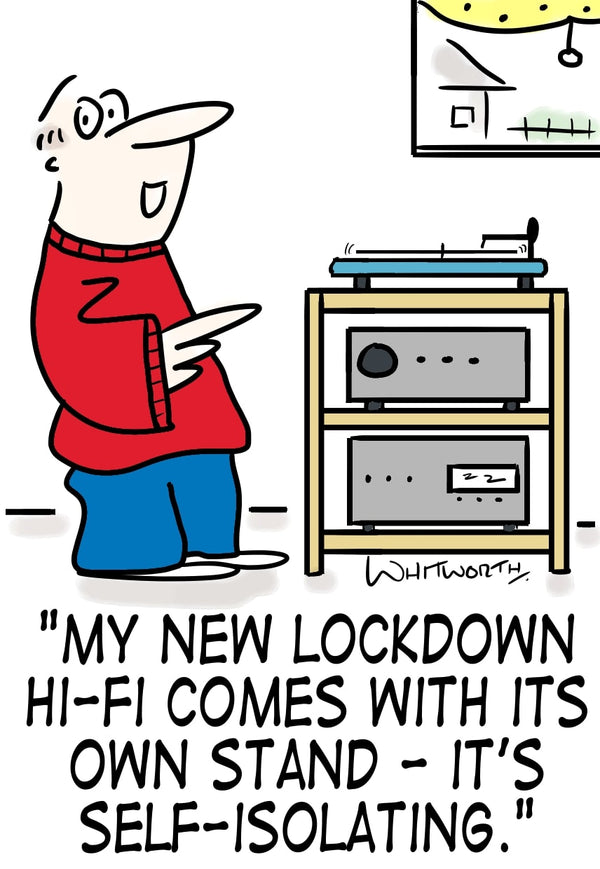
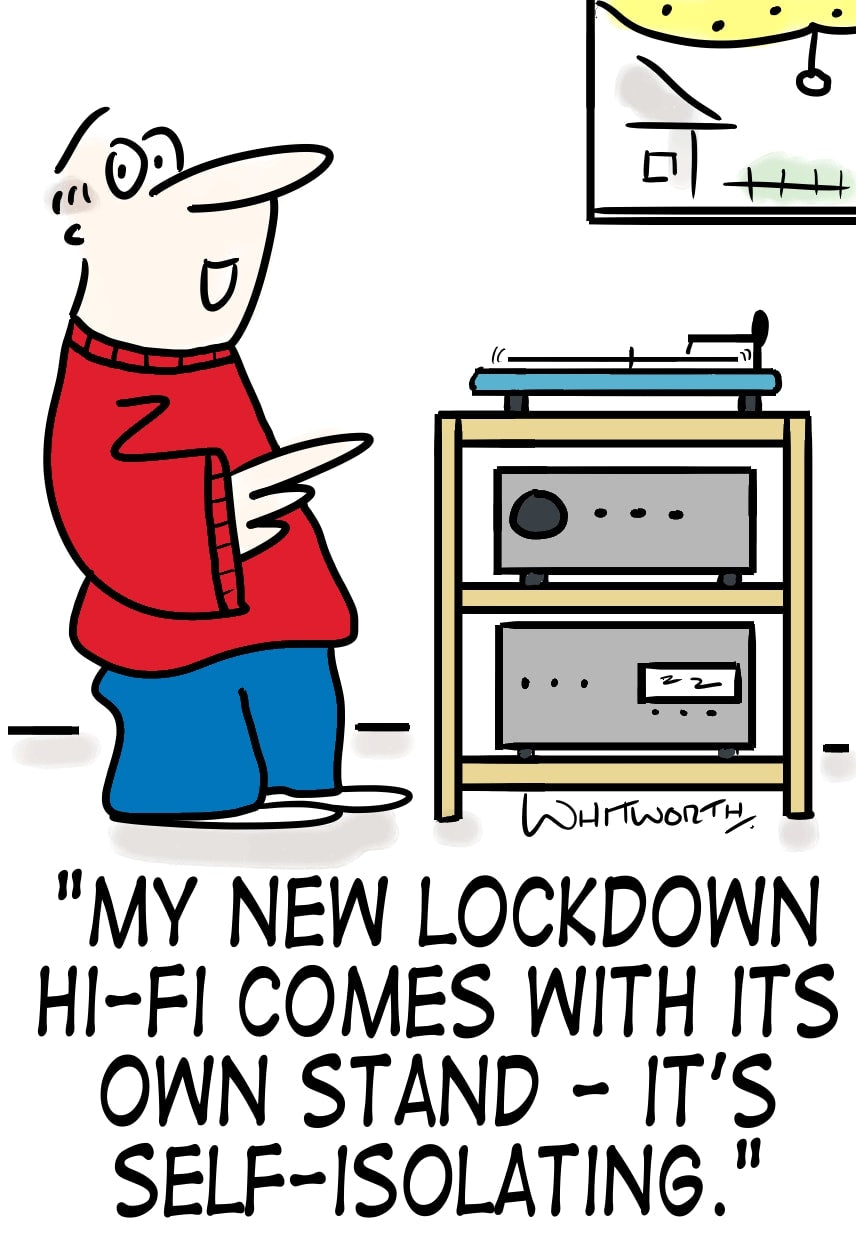


Marcus Miller: Burning Up the Bass
Born in Brooklyn in 1959, Marcus Miller grew up surrounded by music. His dad was an organist and church choir director who made sure his son had classical music teachers from an early age. Miller learned clarinet, saxophone, and keyboards. But he’s best known for his versatile bass guitar playing, which some very big names – Miles Davis, David Sanborn, and Herbie Hancock, among others – have wanted on their albums. He seems to be equally comfortable with every genre, from bebop and contemporary jazz to rock and opera.
In his teens Miller came to love Davis’ playing, partly because his dad’s cousin, Wynton Kelly, played piano with the trumpet master. But when Miller was a kid, his big obsession was with the Jackson 5. His determination to play R&B was what inspired him to start learning electric bass when he was about 12. He didn’t turn on to jazz until he became friends with drummer Kenny Washington when they were both students at the High School for the Performing Arts in NYC. A quick study, by age 15 Miller was already doing jazz gigs around New York.
Miller continues to play, and since 2010 has been the host for a floating summer series called The Smooth Jazz Cruise. He has also had success as a film composer, most notably for Spike Lee’s School Days.
Enjoy these eight great tracks by Marcus Miller.
- Track: “The Only Reason I Live”
Album: Suddenly
Label: Warner Bros.
Year: 1983
Miller’s first album is mostly R&B and contemporary jazz, but this fun number blends in funk and jazz fusion. He’s singing his own song here, and his tight bass line punches up the energy. That’s him on keyboards, too, with a very 1980s electronic twangy sound. The deep drumming groove comes courtesy of Yogi Horton, known for his strong backbeat.
- Track: “Panther”
Album: The Sun Don’t Lie
Label: Dreyfus Jazz
Year: 1993
With his move to the Paris-based Dreyfus Jazz label, Miller’s solo albums focused more on instrumentals and the jazz end of the spectrum. That’s not to say the R&B influence ever really disappears.
The wide-ranging musical skills he displays on this opening track are in on a rare plane inhabited by Prince and… honestly, that’s the only equivalent I can think of. He’s playing bass clarinet, bass guitar, keyboards, and the first half of that fine guitar solo (the second half is by Dean Brown).
- Track: “Strange Fruit”
Album: Tales
Label: Dreyfus Jazz
Year: 1995
Tales is a very good album, with several tracks featuring duets between Miller and alto saxophonist Kenny Garrett. Yet the real gem among these tracks is Miller’s stripped-down and gut-wrenching version of “Strange Fruit,” the anti-lynching song made famous by Billie Holiday’s record in 1939.
The bare arrangement, just bass clarinet with sustained synth chords underneath, brings out the sorrow in the melody. You don’t even need to hear the lyrics to know how tragic they are.
- Track: “Burning Down the House”
Album: M2
Label: Dreyfus/Telarc
Year: 2001
One of the hallmarks of a great artist is their choice of what material to borrow and how they make that pre-existing music their own. Miller gets full points for originality on both counts here. Yes, this is indeed David Byrne’s “Burning Down the House,” as recorded by the Talking Heads. Miller turns it into a jazz funk juggernaut that picks up power as it rolls along. Kenny Garnett and Maceo Parker step in on sax. The way Miller plays with the harmonies on synth after the six-minute mark is worth sticking around for.
- Track: “La Villette”
Album: Silver Rain
Label: Koch
Year: 2005
Miller’s ability to shape phrases on bass guitar is on display in “La Villette.” He shows the difference between using the instrument as an active part of the emotional content of a song versus just using it as the lowest sound to help keep the beat, like an average player does. The lead vocals are by Lalah Hathaway, who also composed the song, with Miller singing backing vocals and beatbox. Longtime collaborator Poogie Bell plays brush snare, and Dean Brown is once again on guitar.
- Track: “Free”
Album: Marcus
Label: Concord Jazz
Year: 2008
The album Marcus leans toward the funk side, but there are still plenty of contemporary jazz elements. There’s a varied line-up of lead singers taking turns on this one (a good choice, since Miller’s voice is not his strong suit), including Keb’ Mo, Taraji P. Henson, and Shihan The Poet. Miller tapped the wonderful British singer Corinne Bailey Rae to handle the vocals for “Free.” Her supple, lacy voice is the perfect foil for Miller’s textured bass guitar sound.
- Track: “February”
Album: Renaissance
Label: Dreyfus Jazz
Year: 2012
Miller’s return to the Dreyfus label for Renaissance brought with it a return to a purer jazz sound, if you will. He composed all the tunes on this album. There’s an Afro-Latin flavor on the track “February,” underpinned by the piano playing of Frederico Gonzales Peña plus Luis Cato on djembe drum as well as standard drum kit. The record is more of a collaborative effort than a solo album; Miller does fine ensemble work here, playing with top-notch fellow musicians. “February” features Alex Han on alto sax and Maurice Brown on trumpet.
- Track: “Preacher’s Kid”
Album: Laid Black
Label: Blue Note
Year: 2018
Although Miller’s most recent album, Laid Black, was nominated for a Grammy for Best Contemporary Instrumental Album, voice is used in various ways. For example, Miller turns the Earth, Wind and Fire song “Keep ’Em Running” into a rap. And the final track, “Preacher’s Kid,” is a moving tribute to Miller’s father that uses wordless singing by the gospel group Take 6 to represent the church choir he grew up hearing every week. With Miller on bass guitar and bass clarinet, he trades nostalgic solos with the soulful saxophones of Alex Han and Kirk Whalum.
Header image courtesy of Wikimedia Commons/Bengt Nyman, cropped to fit format.


Johnny Cash: American Icon
Johnny Cash is part of America’s DNA. In a way, he was a one-man melting pot. His rich bass voice could praise the Almighty as effectively as it could tell a tale of murder or make you laugh. He crossed the genres of country, rockabilly, folk, gospel, and rock and roll, favoring songs that amplified the downtrodden.
Over the course of six decades, Cash made over 50 studio albums, and that doesn’t include his many collaborations with other artists or his famous live albums. Obviously, I can only give a glimpse here of the mountain of treasures in the Cash vault.
Born in Arkansas in 1932, he was raised in a poor family with six siblings. Music was an outlet to accompany work on the cotton fields and a way to entertain each other at night and worship on Sundays. When he returned home in 1954 after a stint in the Air Force, he relocated to Memphis, where he started playing with Luther Perkins and Marshall Grant as the Tennessee Three. Once he’d signed with Sun Records, they changed it to Johnny Cash and the Tennessee Two. No question who the star was.
His first album came out in 1957, produced by Sun founder Sam Phillips. Johnny Cash with His Hot and Blue Guitar! includes his first recordings of songs that would become huge fan favorites, “Folsom Prison Blues” and “I Walk the Line.”
“So Doggone Lonesome” is an example of his early songwriting. It also shows the signature sound of the Tennessee Two (Grant on upright bass and Perkins on Fender Esquire electric guitar), the so-called “freight train” rhythmic pattern. There was nothing slick about the arrangement, but that voice and that delivery – this was a young man who could tell a story in song.
Although he was a prolific songwriter, Cash made it a point to collect songs he loved by other artists. The 1960 album Johnny Cash Sings Hank Williams on Sun Records pays tribute to one of country music’s founding fathers.
Cash’s low voice and contemplative style are completely different from Williams’, but the respect he holds for the older man’s music is unmistakable. Here’s his version of Williams’ hit “You Win Again.” The session musicians aren’t credited on the album, but it’s likely Grant and Perkins among others; the twangy barroom sound they cook up evokes country’s earliest days.
Cash’s first US gold record was All Aboard the Blue Train in 1962. He did it again with I Walk the Line in 1964. Between those was Blood, Sweat and Tears (1963), which got some traction with its single, “Busted.”
More interesting on that record are songs where Cash takes on the Black point of view, particularly “John Henry” and the a cappella “Another Man Done Gone.” Strangely, writing credit for the latter is given to John and Alan Lomax, although this father and son ethnomusicology team only collected the song from chain gang hard-laborers. It was memorably recorded by Harry Belafonte in 1957 on the LP Swing Dat Hammer. Cash’s version includes verses from the Lomax tapes that Belafonte left out.
One of the essential elements of Cash’s style is gospel music, particularly the straightforward rhythms and melodies of white Southern gospel. He was strongly nudged in this direction while working with the Carter Family singers, who’d made their name singing gospel and mountain folk music. Cash applied that sound to songs on other topics, and some good examples can be found on Happiness Is You (1966).
The title track is a love song that Cash wrote with June Carter, already the love of his life while his first marriage was still on its last legs. Carter can be heard singing backup with her sisters. The folk-like simplicity of the tune and arrangement is typical of the songs they created together. W.S. Holland’s ambling drum pattern keeps things low-key.
The 1960s were an endless struggle with drug addiction for Cash, but, with help from Carter (who agreed to marry him if he got clean) and a spiritual reawakening, he got his life back together by the end of the decade. The 1970s started strong commercially, with several solid hit albums, but soon Cash’s success started to fall off. Ragged Old Flag (1974) peaked at No. 16, which was low by his standards.
With backing by the likes of Carl Perkins and Earl Scruggs, this album has a classic Cash sound. Again the songwriter gives voice to the voiceless: “Please Don’t Let Me Out” expresses the point of view of a long-time prisoner who no longer knows how to live in the world and is afraid to be released.
Cash’s only other real success in the 1970s was One Piece at a Time (1976), which made it to No. 2. The album Gone Girl (1978) didn’t chart at all, but that’s no reflection of its quality.
The most interesting track on this album is “No Expectations” by Mick Jagger and Keith Richards. Cash takes it at a bright, energetic clip, much different from the sad, bluesy Rolling Stones original. It’s a complete re-imagining of the song, and it works.
Nothing charted for him in the 1980s. Both rock and country were changing so drastically that it’s hardly surprising he couldn’t find his place with younger listeners. Rainbow (1985) was his last solo album for Columbia, which decided he was no longer worth their investment.
His knack for speaking for the underdog continues with “Unwed Fathers,” a song by Bobby Braddock and John Prine empathizing with a young woman stuck with an unwanted pregnancy. Marty Stuart’s mandolin provides delicate texture.
During ten years recording with Mercury, he still couldn’t regain his foothold. Cash had ceased to be relevant to the establishment recording industry. But among those who still believed in him was Rick Rubin, founder of American Recordings, who approached Cash about recording some covers. Anything Cash wanted, as long as the music was American. The resulting 1994 album, American Recordings, gained attention from critics for its stark production values and Cash’s raw interpretations and unusual repertoire.
It turned into a six-volume series, the last issue coming out posthumously. The track that really captured the world’s imagination, partly for its passionate video, was “Hurt” by Nine Inch Nails. That was on American IV: The Man Comes Around (2002), and there are untold riches worth exploring in all the volumes. For example, take this thoughtful interpretation of Tom Petty’s “Southern Accents” from the second volume, American II: Unchained (1996). Petty himself sings and plays on the album.
It was after Unchained won the Grammy for Best Country Album that Rubin took out a full-page ad in Billboard featuring a famous photo of Cash flipping his middle finger, sarcastically thanking “the Nashville establishment and country radio for your support.”
Cash died in 2003 at the age of 71, only four months after June Carter passed away. In the last year of his life, he kept on recording for Rubin even as diabetes made him weaker. Rubin finally released the last of the songs in 2010 as American VI: Ain’t No Grave. One of those performances is his heartbreaking rendition of “Can’t Help but Wonder Where I’m Bound,” by Tom Paxton. The voice may be thin and the pitch wobbly, but the delivery drips with calm wisdom and deep emotion.
During his lifetime, Johnny Cash sold over 90 million records, won countless awards, and was inducted into all the major music-themed halls of fame. His seems like one of those rare legacies that truly will live forever.
Header image courtesy of Wikimedia Commons.
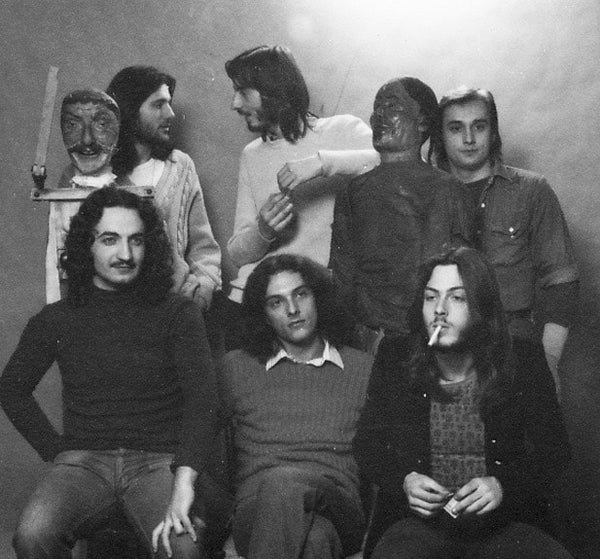
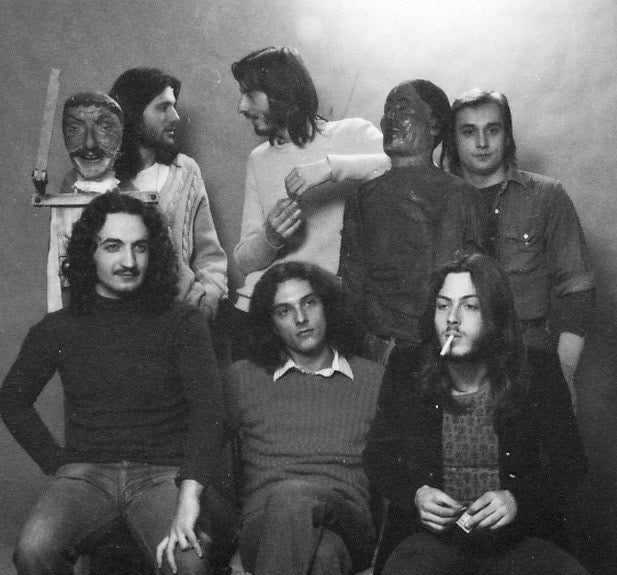
Sensations, Arts and Crafts: Italian Progressive Rock, Part Three
In this installment, I’ll introduce you to two very different bands that still fall under the general category of progressive rock.
Sensations’ Fix is not your typical Italian rock band, with a mostly instrumental sound more in common with German electronic “krautrock” than typical progressive rock outfits. Leader Franco Falsini had been a part of the Italian rock scene since the mid-sixties. He moved to England, forming a band that would return with him to Italy, only to break up shortly thereafter. He subsequently relocated to America (Virginia, of all places) and built a crude recording studio in which he created demos that would become the basis of a rare self-titled Sensations’ Fix 1974 promotional album on Polydor, as well as the band’s first commercial release, Fragments of Light. American drummer Keith Edwards and Italian-American bassist Richard Ursillo fleshed out the group.
Many of the tracks are spacy, trance-like compositions with titles such as “Nuclear war in your brain,” “Space energy age,” and “Windopax and the stone sender.” Don’t ask me to make sense of that last one… One of the nicer cuts is “Music is painting in the air”:
An interesting side note about the album is that there’s a quote from Falsini on the back cover of the LP that reads: “Dear Robert, you’ll be glad to know that the heavenly music corporation is here, too.” Falsini is referring to Robert Fripp of King Crimson, who, along with Brian Eno (late of Roxy Music), recorded an electronic instrumental album in 1972 entitled (No Pussyfooting). Track one on that record was a side-long piece entitled “The Heavenly Music Corporation.”
The group had relocated to Italy prior to the recording and release of their second LP, Portable Madness. It was produced by Filippo Milani and engineered and mixed by Falsini on a TEAC 4-track in his own studio near Florence, resulting in less-than-stellar sound quality. Nevertheless, it is considered by many to be their best effort, with nary a vocal track to be found. Falsini’s penchant for bizarre song names continued with such titles as “Leave My Chemistry Alone,” “Strange About the Hands,” and “Pasty Day Resistance.” “Fullglast” shows one side of their sound:
Franco Falsini recorded an instrumental solo album in 1975, Cold Nose (Naso Freddo), the soundtrack to the short film of the same name that was made by producer Milani. The sound is very much like Sensations’ Fix, minus the drums. Robert Fripp’s influence is quite evident on this one (along with a generous portion of Terry Riley):
In 1976, Sensations’ Fix became a quartet with the addition of keyboard player Stephen Head. Their next album, Finest Finger, included a number of vocal tracks, all sung by Falsini. One of those songs is “Strange About Your Hands,” a reworking of the similarly titled track from Portable Madness.
“Map” is an instrumental track, and it features some more energetic than usual drumming from Keith Edwards:
Boxes Paradise, their next album, is much more of a “rock and roll” record, and a real departure from what came before. It was their first to feature vocals on every cut, with lyrics written by one Melanie Faith. Falsini is not a particularly strong vocalist, and the lyrics are not compelling enough to make up for that. The opening track, “The Flu,“ will give you a representative sample:
1977’s Visions Fugitives (a title inspired by the collection of Prokofiev piano pieces of the same name) was the only Sensations’ Fix album to debut on an American label – the short-lived All Ears Records. It was also part re-hash and part new material. “The Flu” reappears with a slightly funkier beat as “She’s Gonna Grow on You,” and “Fix a Drinking Fountain” concludes with an instrumental section called “Cold Nose Flashback.” Even the title track is a re-working of a cut with the same name from Boxes Paradise. Keyboardist Head takes over on drums for most tracks, with Marco Marcovecchio spelling him on two cuts. Keith Edwards also appears on one song. I can’t let this one go without mentioning a couple of other song titles – “Secret Orders for Operation Brainstorm,” and “Warped Notions of a Practical Joke.” Here’s the latter:
Flying Tapes, a 1978 release, is a compilation of re-mixed tracks from throughout their career. It is also labeled as the soundtrack to a television broadcast entitled “La Casa del Sole” (The House of the Sun).
In 1979 the band tried one last shot at commercial success, re-naming itself Sheriff (not to be confused with a Canadian rock band of the same name from the 1980s). It was released on a very obscure label called Observatory (again, not the same as later companies using that name from Italy and Russia). The lineup was Falsini, Ursillo, and Edwards, with the addition of another guitarist, Frank Filfoyt. It was, unfortunately, another forgettable effort along the lines of Boxes Paradise. The lyric sheet/inner sleeve includes a handwritten exhortation from Falsini to “Play It Loud!” (Spoiler alert: It Doesn’t Help!). I’ll admit, though, it’s hard to pass up song titles such as “Infall Defrauders and Audiphones” and “Girl With Optional Eyes.” Here’s the latter:
In my opinion, the best of Sensations’ Fix is to be found on the albums Fragments of Light, Portable Madness, and Finest Finger. In conclusion, check out this trippy live performance (with some obviously pre-recorded material) of “Strange About Your Hands” from 2013:
The second of our Italian bands in this installment straddles the line between progressive rock and jazz/rock fusion. Arti & Mestieri (“Arts and Crafts”) was an incredibly accomplished six-piece, primarily instrumental outfit consisting of Gigi Venegoni (guitar/synthesizers), Giuseppe (Beppe) Crovella (keyboards), Giovanni Vigliar (violin/vocals/percussion), Arturo Vitale (saxes/clarinet/vibes), Marco Gallesi (bass), and Furio Chirico (drums). Clear influences include both King Crimson and Mahavishnu Orchestra.
Chirico put together Arti & Mestieri around 1974 in Turin, after having played with a number of groups, the most recent being The Trip, an ELP-style trio with whom he recorded two albums. I guarantee you have never heard or seen a drummer like Furio Chirico. Although his drum set is arranged in a conventional right-handed layout with the high-hat on his left, his traditional stick grip is reversed, and he uses his left hand for the high-hat. He plays with a speed and style that sets him apart – flashy, but tasteful. In 1977, I had the opportunity to speak with PFM drummer Franz di Cioccio (no slouch, he), and I asked him if Chirico was really that fast. He replied “Yes, but sometimes I think he is too fast, and loses the feeling.” I can’t say that I agree. Watch this jaw-dropping clip of him performing to a backing track at a music clinic:
Arti & Mestieri’s debut album, Tilt, came out in 1974 on the Italian label Cramps (which featured Frankenstein’s monster in its logo), and it’s a killer. Most of the tracks flow into one another. The tragedy is that such great music was poorly recorded (another example of this would be Soft Machine’s 1975 album Bundles, which featured Allan Holdsworth before he became well-known). Side two begins with a brief instrumental intro called “Farenheit” that leads into the album’s centerpiece, “Articolazioni” (Articulation). Here is “Articolazione,” all 13-plus minutes of outstanding music:
Oddly enough, the short title track is the only weak spot on the record. It’s a strange collection of synthesizer bloops and bleeps with other instrumentation and random callbacks to bits of the other compositions.
Their second album, Giro di valzer per domani (“Waltz Ride for Tomorrow”), came out a year later, and was much better recorded. The instrumental tracks were more jazz-inflected than those on Tilt. For whatever reason, like PFM, they felt the need to add a different vocalist, Gaza Gianfranco. To my ears, he was not an improvement, but again, there are only a few tracks with vocals. The second cut on the LP is “Mirafiori”:
“Sagra” features a breathtakingly high-speed guitar/bass/drums workout:
Five years would pass before another Arti & Mestieri album would be made, featuring new members Claudio Montafia on guitar, Marco Cimino on keyboards, and a number of guest vocalists. Venegoni, Crovella, and Vigliar were no longer with the band. This resulted in a major stylistic shift away from fusion toward what I call “happy jazz,” easy to listen to and easy to ignore. Bass player Gallesi seems stuck in a funk/jazz mode. If you listen to “Arti,” you’ll see what I mean:
It’s worth listening to the whole 2:36 (or skipping ahead) to let the next video, “Alter Ego,” play – you’ll see the contrast. Going back to Quinto Stato, here’s a vocal track, ”D’Essay,” to drive my disappointment home:
In 1983, Chirico remade Arti & Mestieri with a completely new set of sidemen for the all-instrumental, live-in-the-studio album Acquario. This one has a jazzier, more horn-based sound, featuring Siro Merlo on tenor and baritone saxes, Guido Scategni on contralto sax and flute, guitarist Luigi Tessarollo, and keyboard man Antonino Salerno (along with a few guests). Bassist Umberto Mari plays in the same funky style as had Gallesi on the last record. The musicianship is impeccably tight, and the cut “Tiroxina” is fairly representative of the sound of the album:
If you like, the whole disc can be heard here:
1985’s Children’s Blues continued in the same vein, despite numerous personnel changes and an expanded lineup. Drums, bass, and keyboards remain unchanged, with new guitarist Mario Petracca, Claudio Bonadè on alto sax, Gigi Mucciolo on trumpet and fluegelhorn, and Johnny Capriuolo playing trombone. There are a few guest players as well. The entire album is linked here:
Sixteen years went by before another album would be released. Murales marked the return of founding members Crovella, Gallesi, and Venegoni. They were augmented by former keyboardist Cimino, with Corrado Trabuio on violin. Another instrumental outing (with occasional wordless vocalizing), Murales incorporates some world music influences, on tracks like “Astortango” and “Sun.” It also has a couple of remakes of earlier songs. The album’s longest track, “2000,” includes quite a number of mood shifts:
2005 saw new studio and live recordings from the reconfigured band. Gone once again are Gallesi (replaced by Roberto Cassetta on bass and vocals), Cimino, and Venegoni (although he does play on two tracks). New member Marco Roagna does a nice job on both acoustic and electric guitars, along with Alfredo Ponissi on saxes, flute, and clarinet. The whole Estrazioni (“Extractions”) album can be found here:
Italian progressive bands from the 1970s enjoy robust fan support in Japan – so much so that a surprising number of them have recorded live albums there in this century. For their 2005 concert, released on CD in 2006 as First Live in Japan, Arti & Mestieri added Iano Nicoló on vocals. This is an instrumental excerpt from that performance:
In 2013, they released a live CD/DVD set. The DVD is from a 2011 performance in Veruno, Italy, and the CD was recorded in 2011 at the same club in Japan as the previous live set. The Italian show features King Crimson alumni Mel Collins on woodwinds and David Cross on violin.
The latest album, Universi Paralleli, is from 2015. Nicoló again handles vocals, and he has a fine strong voice. This time around, Gigi Venegoni returns on guitar, the violins are played by Lautaro Acosta, and Roberto Puggioni plays the bass. Collins and Vitale guest on a few tracks. The previously noted “Alter Ego” and “Finisterre” are found on this disc. The only cut available on YouTube is “L’ultimo imperatore” (The Last Emperor):
If you’ve been impressed with Arti & Mestieri, there are many more live performances to be seen on YouTube, and I would encourage you to explore them. More Italian progressive rock next time…
Header image of Arti & Mestieri courtesy of Wikimedia Commons/Stadel 15.


Pacific Breeze
It might be hard to imagine, but there was a time when there was not a Japanese restaurant in every city neighborhood and suburban strip mall. It was a time when most Americans thought the idea of eating raw fish was like, “never!” instead of a staple now available fresh adjacent to the seafood counters of many supermarkets. Once, there were only a few Japanese restaurants in in New York. Now TripAdvisor lists the top 30 Japanese restaurants in Wichita, Kansas.
Even as recently as the mid-1970s, it was not that way. There were a few Japanese restaurants in Manhattan, including the venerable Fuji (now known, of course, as Fuji Sushi) on West 56th Street. It didn’t specialize in sushi, though it did offer sashimi as an appetizer to go along with main courses such as sukiyaki, and negimaki, cooked thin sliced beef rolls now available in every Japanese restaurant’s bento box or cooked food selection. The sushi boom didn’t take hold until the 1980s, when Japanese business and products from automobile manufacturing to Wall Street drove the global economy.
One area Japan did not excel was in pop music, where American and British imperialism ruled the international stage, and had broad and deep influence on the Japanese market. “Sukiyaki,” by Kyu Sakamoto, was the one Japanese language song to top of the Billboard singles chart, which it did for three weeks in spring 1963.
I had a first row seat to Japanese pop and rock music and music journalism throughout the 1970s. On a trip to the west coast around 1974, two friends of mine, Ed Ward and John Morthland, who were recent refugees from Rolling Stone, introduced me to a woman who named herself Haruko Minakami. This was a pen name she chose in tribute to the great Japanese writer Haruki Murikami; I did not learn her real name was Akiko until the Facebook era. She was looking for writers: Haruko and I hit it off, and I became a regular contributor to a series of Japanese rock magazines she edited over the next eight or ten years, including Plus One, Jam, and Music Life. These magazines covered the Anglo-American acts that were Big in Japan, mostly mainstream rock bands that ruled the British and American charts, including David Bowie, The Who, the Rolling Stones, the solo Beatles, Cheap Trick, Aerosmith, the Allman Brothers, Rod Stewart, and all the rest of the international rock royalty.
But Haruko would occasionally send me heavy boxes of albums, both new and classic, by Japanese rock and pop acts. The album covers, notes, and songs were all in Japanese. She would tape a piece of paper with sentence or two with the name of the artist and the slightest amount of information, leaving it up to me to figure out everything else, to just respond to the music. I would write in English, and she would translate the articles into Japanese. I loved the band names: The most polished rock band of that time was the Sadistic Mika Band, which played its own whimsical blend of pop and prog. There was a band called the Bad Boys, who did note-for-note covers of Beatles songs on their album, Meet the Bad Boys.
My favorite group was a lumbering power trio irresistibly named Speed, Glue, and Shinki, whose lack of adeptness added to their allure. On the opposite end, the competent, musically accomplished end, was an album by Haruomi Hosono, the exceptional Hosono House. A quality breakthrough for easygoing Japanese language rock, Hosono’s 1973 solo debut album has had an influential cult following ever since.
But I don’t recall Haruko ever writing to me about, or sending me any of the records, that are included in the new anthology Pacific Breeze 2: Japanese City Pop, AOR and Boogie 1972 – 1986. This is the second such collection by the dedicated enthusiasts and crate-diggers at Light in the Attic Records, who have been behind the rediscovery or emergence of artists as diverse as Rodriguez, Lee Hazlewood, Serge Gainsbourg and Jane Birkin, and ghost artists like Jim Sullivan and Jim Ford.

The album’s subtitle doesn’t really capture what the music here is like. AOR (album oriented rock) is really a 1970s radio format created by network programmers, who replaced the freeform FM of the 1960s with tightly limited playlists. And the term “boogie” I usually associate with more or less adequate blues rock bands, such as Canned Heat and Foghat, or better than adequate ones like ZZ Top. There is nothing like what we call AOR or boogie on this collection at all.
But City Pop – I like that phrase, mundane and exotic, and it does define the urbane ambitions on this collection, that blends funk, disco, fusion, smooth jazz, lounge, the precursors of what you could call “chill.” The closing cut, “Bay/Sky Provincetown 1977” by Yuji Toriyama, is so chill it might as well be a watercolor, and that is meant as a compliment.
The one Japanese band to achieve international impact in this period was the innovative electronics-oriented Yellow Magic Orchestra [see Copper’s article in Issue 108], two of whose members, Haruomi Hosono and Yukihiro Takahashi, are both heard on various tracks here. The third member of YMO, Ryuichi Sakamoto, became a composer of film scores and ambient music, including that of The Last Emperor with David Byrne.
Since the 1960s, Hosono has been the great man of Japanese-language music, a ubiquitous presence in every attempt at establishing an indigenous Japanese rock and roll, as solo artist, group member, sideman, producer, and songwriter. (Light in the Attic released a single in 2018 of Mac DeMarco’s adoring cover of Hosono’s 1975 song “Honey Moon” in Japanese.) Hosono House (you can hear the whole album on YouTube stands up as well as any album of its period.
In their strange way, so do many of those highly derivative tracks from Pacific Breeze 2. Some of these tracks feature what was known as Tin Pan Alley, Japan’s answer to Phil Spector’s Wrecking Crew, which featured Hosono on bass, Tatsuo Hayashi on drums, Shigeru Suzuki on guitar, and Masataka Matsutoya and Hiroshi Sato on piano.
To go too deep into the rabbit hole on who plays what on what track is a fool’s errand for this record. In fact, the jumble of factoids at the heart of the lavish packaging (there is a two-disc vinyl set) are the weakest link, since they offer long artist bios, but little or confusing information about the specific songs, musicians, or even basics like local chart positions, on the digital package.
There was a little bit of cross pollination between Japan and Los Angeles. Stevie Wonder’s influence can be heard in the harmonica playing on “Last Summer Whisper” by the singer Anri, and Wonder played keyboards on an album by the brother-sister duo Bread & Butter. It’s not clear from the notes whether Wonder played on “Pink Shadow,” the Bread & Butter track that opens the album, on which you feel the faint touch of “Summer Breeze” and “Grazing in the Grass.”
Most of the tracks feature female lead singers. It is just a guess, but that may be because one of the few places musicians could earn reliable gig money in the 1970s was shows at the United States military bases in Japan, a time and place where USO shows were stacked with pretty girls. This also might have been the preference of Japan’s TV and radio at the time.
Kimiko Kasai, who like many of the women singers here had jazz backgrounds, offers a genteel take on disco and funk on “Vibration (Love Celebration).” On “Kanpoo,” from 1983, Yumi Murata skillfully lets her voice float above the hard funk track that recalls Cameo or the “Brick House” period of the Commodores. The versatile vocalist Eri Ohno’s “Skyfire” gets a boost from a terrific funk guitar and bass track. On the whispier side, Junko Ohashi & Minoya Central Station’s “Rainy Saturday & Coffee Break” is effective mood music, in which the title is all the translation you need.
The notes don’t refer to Steely Dan, although the solos of some of Dan’s frequent studio guitarist Larry Carlton are the model for some of the breaks on Tomoko Aran’s “I’m in Love,” and Piper’s “Hot Sand.” The Steely Dan influence is most pronounced in the defining song, “The Tokyo Taste,” by the Sadistics, former members of the Sadistic Mika Band. They’re like Steely Dan in reverse: Instead of Fagen and Becker using guest musicians on their tracks, the core instrumental quartet of the Sadistics hired guest singers. Rajie, who became a successful solo artist, and Alex Easley, are the singers on “The Tokyo Taste,” my favorite track. It’s a song you can hear in a slightly different version on a City Pop subreddit page (Rajie with a different male singer), that would have been right at home on Fagen’s Sunken Condos solo album.
Blaxploitation film soundtracks were also an influence, but they manifest in a curious way. The tracks “Kindaichi Kosuke Nishi E Iku” by Yu Imai, and “Kindaichi Kosuke No Theme” by the Mystery Kindaichi Band are both from the same “soundtrack” album, both making you feel like the credits are going up on Across 110th Street.
But they are themes from an imaginary movie. The concept album is based on the detective Kosuke mystery novels written by Seishi Yokomizo. In a way, these fantasy tracks bring it all back home, giving a cultural closeness to what, for Japanese viewers, must have been the emotional distance of “Shaft” movies.
Now that one can watch Japanese samurai and yakuza movies seven nights a week on streaming services, now that Japanese anime and manga have become an indelible part of American pop culture, Pacific Breeze 2 may have more appeal now than it did in its time. If I owned a sake bar in Denver or craft cocktail lounge in Brooklyn, I’d have this album on repeat late into the night.
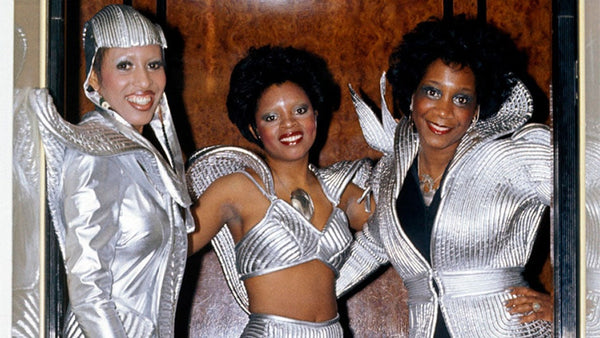
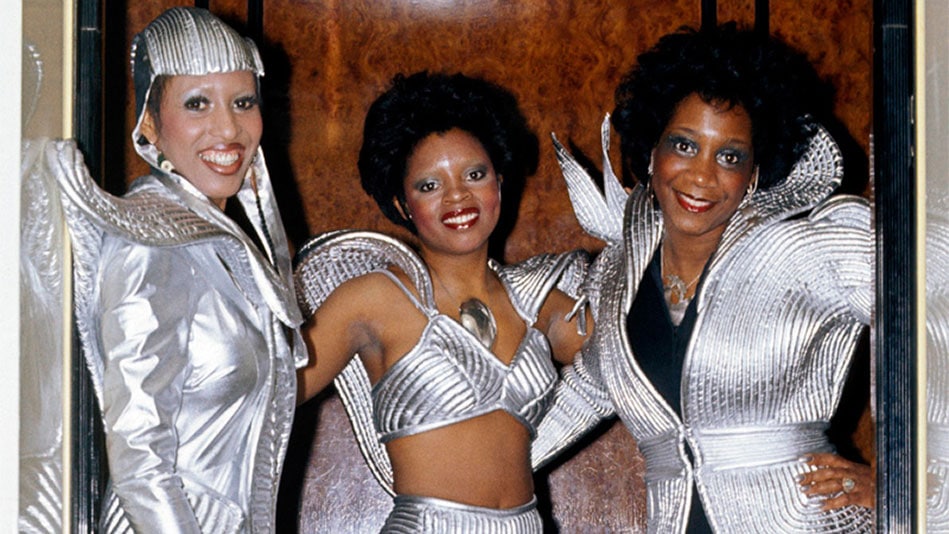
Labelle: Quality Time with the Girls
In the rental car, the two Jims and I head down I-95 south to Veterans Stadium in Philadelphia. It’s an afternoon Rolling Stones concert and we have backstage VIP passes. The Jim’s [Jim Kellem and Jim Veal] were big-time rock and roll agents from Creative Management Associates (CMA, later ICM Partners) and for them, this was all in a day’s work.
Labelle was the warm-up act and the reason for this reminiscing. Their big hit, which came later, was “Lady Marmalade,” known for its “Voulez-vous coucher avec moi (ce soir)?” chorus. They wore wild, outrageous glittery outfits and makeup. Even in street clothes, they stood out.
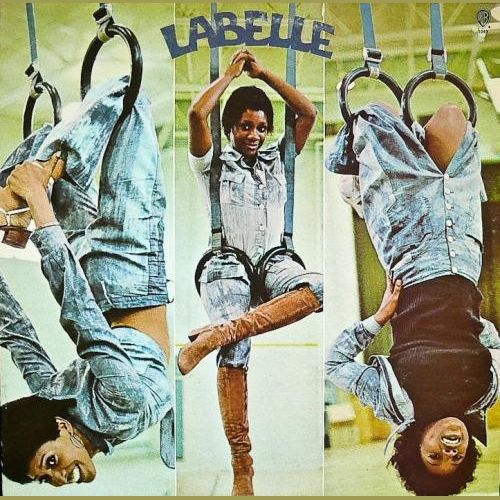
The concert was great; 60,000 attendees enjoyed the show. We met the Stones (just a quick nice to meetcha) and then I hung around and had a beer in the massive dressing room (the Philadelphia Eagles and Phillies locker room) while the Jims chatted with other agents and the concert promoter.
Afterward, we drove over to Patti LaBelle’s house for a late lunch. She lived in the Germantown (nice neighborhood) section of Philadelphia. Patti gave us a warm welcome. She was expecting us; Jim Veal was her agent. Her manager Vicki Wickham was there and after some talking and laughing, we sat down to eat. What I did not know at the time was that this was an informal job interview.
Two weeks later Jim Veal calls me and asks if I can be the road manager for Labelle just for one week, for a club date in Toronto. He said Vicki could not go because she was waiting for her green card (she’s British) and if she left the US she wouldn’t be allowed back in. Vicki previously was the producer of the groundbreaking British television show Ready Steady Go! and she wrote for Melody Maker and other publications in the 1960s.
The next Wednesday Labelle – Patti, Sarah Dash, and Nona Hendryx – meet me and their band at LaGuardia airport for the flight to Toronto. After we pass through customs, I rent two station wagons from Avis and we drive into Toronto. On Yonge Street, The Royal Canadian Mounted Police pull us over. I’m one white guy with three outrageous-looking Black women and six Black band members, a strange-looking crew. I tell him that we are Labelle, a music group, and we’re playing the Troubadour, a big club on Yonge Street. Makes sense to them and off we go.

That night before Patti goes on stage, she tells me her throat is a little sore. I get her some hot tea with honey. They go on and do a great show. Next afternoon Nona comes to my room and says Patti’s throat is killing her and Vicki is on the phone and she is mad as hell at me. We go up to Patti’s room and Patti rasps at me, “I think I have nodes on my throat!” This is a serious condition for any singer and can take months to heal. She angrily points to the phone sitting on the table and says, “Pick it up! Vicki’s on it!” I bend over to pick up the phone and Patti sticks a pin in my butt. I jump! “Just kidding,” Nona says to me. That Patti is a practical joker.
Patti was the sweetest one, always nice to me. If anyone from outside the group tried to give me any grief Patti would jump on them. Sarah was elegant, sexy and she had plenty of stage door Johnnys. The men that came calling for her were usually successful and classy. Nona was tall, slim yet full-figured. She was one with the deep voice and willing to take a nip.

Back in New York Vicki offers me the job on a permanent basis. However, the pay is not that great. She explains that she and the girls get that same amount and that we all are equals dollar-wise. Okay, I like the girls and I am unemployed, so I give it a go.
A few weeks later we are playing a club just outside Boston and Laura Nyro shows up. She and Patti did an excellent album, Gonna Take a Miracle, together last year (check it out), so they are good friends. I had met Laura a few years back when my sister (a well-known rock critic and writer) and I visited her and her manager, David Geffen, at Laura’s penthouse apartment in a prewar building on West 79 Street. It was a Sunday afternoon of sunshine, Bloody Marys and snacks on her 20th-floor roof balcony. Nice view, good fun and Laura was so sweet. Laura stayed for the whole show and enjoyed the evening.

For the first few weeks we are the opening act for Al Green on an East Coast concert tour. Al and the girls were old friends, so everything was easygoing. The thing about Al that surprised me was when he sang it was almost a whisper. Really soft, but amazing.
One night we play Washington DC. After their set I go to collect the money. I walk into the box office and there is a loaded 38 caliber Smith & Wesson pistol laying on the table by the promoter’s right hand. He smiles knowingly at the other guy in the office and then smirks at me. “The gun bother you?” he asks. “No,” I say. I am not scared but I am not going to be a wise a*s either. “Well,” he says, “what would you say if I told you I am not going to pay you?” “Nothing,” I answer, “but you would never book a headline act again.” “Once this gets out no one, not CMA, William Morris or any of the big booking agencies will do business with you.” He laughs and smiles at me and says, “I was just kidding with you, you know that, right?” “Sure, no problem.” He hands me our $2,500. I should mention, this happens, but not very often. Rock and roll.

Patti has been in the biz a long time and she tells me I would not believe what some of her managers have done to her and other acts. They got paid pocket cash only, stayed in run-down one-star hotels and sometimes had to do three or four shows a night for weeks on end. Vacation? What vacation?
This all started during Prohibition when the owners of speakeasies would book blues and jazz acts. The owners were tough street-smart connected guys. When they came across new talent they took the acts under their wing and became their managers and agents. That kept ’em working (which is what it is all about for the acts). However, the owners had a claw-hold on the talent. The performers had little input into what was going on or how they were treated No contracts were signed. The managers conducted their heavy-handed rein over the talent well into the 1950s when finally, they started dying out. Imagine what a pleasure having a caring manager was for a performer like Patti after all she went through.
We have a weeklong gig in Memphis and are staying at a Holiday Inn. This is a really nice hotel with a great view of the banks of the Mississippi River. Patti gets a message from the front desk that Cheech and Chong were doing a concert in Memphis and they were going to stop by after the show to meet and hang out with Patti. Patti is flattered and nervous. She drinks a little (Rock and Rye) but she does not smoke grass, which of course Cheech and Chong are known for. Around eleven-ish they knock on the door. They just love Patti. After a bit they say, “do you guys want to smoke?” Patti says, “not for me, but Kenny will join you.” We all get giggly and the laughter starts. They are very gracious, and quite humble considering their massive recent success. They are on a sellout headlining tour of forty-eight cities and enjoying the popularity of their movies. Genuinely nice, regular guys, but I was a little let down that they did not do any schtick for us. And to be fair I think they were disappointed that Patti did not partake.

The Continental Baths was a luxury gay bathhouse in the basement of a high-end hotel in Manhattan’s West Seventies. The Baths, as it was called, was made famous by Bette Midler, or rather, I should say the venue made Bette famous. A good number of Patti’s fans were also fans of Bette’s.
The girls are booked for Saturday night and I know this is gonna be a trip. The Baths were nice, upscale and around four pm we do a soundcheck. I must say it is really unusual to see men walking around with only towels wrapped around their waists. Not the usual gig situation! I certainly was not going in the back rooms. Later that night we do the gig and the place was packed with almost-naked men. They were polite and kept their towels on. They loved the girls.
As a road manager, you see everything from up close. It keeps you busy. For me, it was rewarding and satisfying. The money is generally good (the Labelle tour was an exception), not to mention the travel and experiences one has. When you move at that fast-pace the scenery and intensity are heightened. It’s a rarefied atmosphere that very few folks get to experience.
After a gig or anytime we were in Manhattan it’s part of my job take Patti to Penn Station and sit with her till she boarded her train home. At this point in time, Patti is four months pregnant and my mode of transportation in the city is my Honda 450cc motorcycle. No problem. Outside in the backstage alley after have their latest gig, Patti gets on the back of my bike and puts her hands around my waist. We drive off down Broadway and bear right onto Seventh Avenue through Times Square to 33rd street, the entrance to Pennsylvania Station. I can only imagine what a sight a pregnant Patti, decked out and glamorous as all hell, and big bushy-haired, bell-bottomed me must have looked like going through Times Square.
Ultimately, I had to leave Labelle. I could not make ends meet on the salary I was getting. I held on for almost a year. It was a lot of fun working with them – practical jokes aside, there was no BS, they really appreciated me and everything I did, and of course, I took good care of them.


Four Figaros
In the last six weeks, I’ve watched Mozart’s opera Le nozze di Figaro three times. That’s three hours per performance, so nine hours, not counting bathroom breaks or snack attacks. Well worth it!
Figaro makes me smile, makes me glad to be human. There’s wonderful music, of course, but also comedy—specifically, sex comedy. French playwright and genius-in-general Pierre-Augustin Caron de Beaumarchais (1732–99) created it in the Age of Enlightenment, so it’s wise, thoughtful sex comedy. Mozart’s librettist Lorenzo Da Ponte retained most of Beaumarchais’ characters, persons of all ages, genders, and social strata including a couple of crabby seniors and one very horny teenager. The music is lively too, based on contemporary dance forms and delivered largely as a series of ensembles—duets, trios, quartets, etc.—in which characters argue, reveal astonishing secrets, and plot further intrigue. In short, they keep busy, avoiding the longueurs associated with opera.
Everyone onstage desperately wants something. Figaro and Susanna, servants to Count and Countess Almaviva, want to marry, but they will need the Count’s blessing. Count Almaviva wants Susanna as a lover and has begun applying various threats and enticements. The Countess only wants to regain the loving relationship she once had with her husband; she forges an alliance with Susanna to persuade (or at least embarrass) the Count into reaffirming their bond.
Rounding out the cast are Marcellina, an older woman, and Bartolo, “a doctor from Seville.” Years earlier Marcellina loaned Figaro money; he signed a note agreeing to marry her if he could not repay it. Now she wants to collect, and has allied herself with Almaviva and with Bartolo, who bears a grudge against Figaro for helping the Count woo and wed his ward Rosina. (The good doctor wanted her as his own bride.) By 1786 Mozart’s audience knew that bit of backstory: already an opera based on an earlier Beaumarchais drama about Figaro, Almaviva, Bartolo, and Rosina—the future Countess—had played Vienna. That opera, Il barbiere di Siviglia, was not the enormously popular Rossini version launched in 1816, but a now-forgotten setting by one Giovanni Paisiello. (The plot’s the same: Figaro was the “barber.”)
Besides Marcellina, Le nozze di Figaro introduces the page Cherubino, a trouser role. His newly raging hormones fuel a mad attraction to the Countess and every other female in the great house. Love is all around, they say, and so is Cherubino, who can’t help turning up in wrong places at even wronger times. Mutual understanding and forgiveness eventually save him and the grownups alike. But first, complications must ensue.
Here’s a preliminary synopsis. You may already know the opera, but I’ll avoid spoilers anyway. All the action takes place in a single day. Act I, scene 1 features Figaro and Susanna as they prepare for their wedding. Each has a different concern at first, so Mozart gives them subtly different music. As he measures for their bed, Figaro mutters along to a march; when Susanna asks him to notice her bonnet, she does so to a lyrical tune in gavotte style (its phrases begin in the middle of a four-beat measure). Finally she convinces him to join the gavotte, providing a musical hint of what’s to come: Figaro may fancy himself a clever fellow, but by nightfall Susanna will show us she’s the sharper knife, the more essential architect of their schemes.
This first clip is from Peter Hall’s 1973 Glyndebourne production; Susanna is Ileana Cotrubas, Figaro Knut Skram. (Other principals include Te Kanawa, Luxon, and von Stade; John Pritchard conducts.) To skip the overture and opening credits and go directly to scene 1, forward the clip to 4:38.
Susanna and Figaro sing not one but two duettinos. A lot of Act I is like that: out of eight numbers, half are ensembles. Marcellina and Susanna—rivals for Figaro—get a comic duettino; later the Count, Susanna, and her music teacher Don Basilio engage in a funny/creepy terzetto. Even the solo numbers are pointedly delivered to someone: Figaro addresses his angry “Se vuol ballare” to the Count (who isn’t in the room, but!); Bartolo sings “La vendetta” partly to show Marcellina that he takes her lawsuit seriously; Figaro delivers “Non più andrai,” a stream of ironic instructions about army life, to Cherubino, who faces exile from the palace.
You can watch all of Act I in the Glyndebourne clip (or in the Ponnelle clip below), but I’ll discuss only the scene 7 terzetto. Susanna has just dispatched Marcellina from the room when (at 22:05) Cherubino breathlessly enters. He’s in trouble again with the Count but pivots to a more important topic: the Countess. In exchange for one of her ladyship’s nightcap ribbons (“Oh, lucky [maid]! You dress her each morning, undress her each evening . . .”), he offers Susanna a slip of paper with a song he’s written. Without pause he launches into a different song, one about his strange new feelings.
He’s barely finished that when (at 26:50) the Count is heard coming down the hallway. Cherubino quickly hides. Count Almaviva enters—in his dressing gown—and proceeds to woo Susanna. He hasn’t gotten far when Basilio happens by. And there I’ll stop: the scene is nearly set. As you watch, bear in mind that one of Mozart’s innovations lay in his ability to compose an ensemble number in which characters voice feelings sharply at odds with one another. In these numbers, time doesn’t stand still; the action continues.
Perhaps these moments will show you why I cherish Peter Hall’s 1973 Glyndebourne production. It never strains for effect, but nothing is insufficiently developed: characterizations and stage movement are fully realized, the singing and acting impeccable.
Much the same can be said of Jean-Pierre Ponnelle’s 1976 film version (link below: scene 1, 4:34; scene 7, 29:21). I won’t waste space praising Ponnelle and his collaborators (Prey, Freni, Fischer-Dieskau, Te Kanawa, Ewing; Böhm conducts); their work is already a benchmark. You do have to accept a few Ponnelle-isms, chief among them his penchant for what Marcia Citron called the inner monologue: someone sings but her lips don’t move. These devices “probe psychological conflict in a character or reveal dramatic irony.” (As with movie musicals, all the singing was recorded before filming took place.)
But wait. This column is titled Four Figaros. What happened to the other two?
My Figaro odyssey actually began with a Blu-ray of the Paris Opera 2010 revival of a 1973 Giorgio Strehler production (scenery and costumes from Milan 1980!). Philippe Jordan conducts a vivid, slightly Romantic reading, and the cast—especially the women, especially Barbara Frittoli and Karine Deshayes—nicely complement Strehler’s vision. Gramophone’s critic called it “a traditional classic, set in long-perspectived, naturalistic Goya-esque Spanish interiors and costumes.” Indeed, everything looks gorgeous, “painterly.” (Sight and sound aside, our critic nevertheless preferred Hall/1973/Glyndebourne for its “spikier take on tradition with a sharp cast.”)
Strehler championed honesty in theatre production. In his essay “Mozart: Universality and Humanity,” included in the Blu-ray booklet, he wrote:
As a rule Figaro is performed as a vision of a fake, prudish 18th century. Love is not carnal and people hardly touch each other. Enter Susanna and Figaro and what happens? Nothing. And between the Count and Susanna? Nothing again. He kisses her fingertips. Yet there is a sensuality in the music, an emotional truthfulness that needs to be given expression.
My positive experience with Strehler’s Figaro led me to revisit David McVicar’s 2006 Royal Opera House production. It had mightily impressed me a few years ago; it still does. This performance, not Strehler or Hall or even Ponnelle, would be my own Desert Island choice.
Here’s the dominant factor in McVicar’s staging: the servants are always present. They see and hear everything. They steer the ship. McVicar stages the overture as a morning drill for household staff, choreographed by a stern, efficient matron. I usually dislike such interpolations, but this one really works. In Mozart and the Enlightenment, Nicholas Till tells us “the 18th century reckoned that it had a servant problem. . . . Masters were frightened of the new independence of servants.” The household famulus of feudal society had disappeared, along with slavery (at least in Europe). Old hierarchies were gradually superseded by contractual relations between servant and master—note the number of contracts that surface in Figaro! (Note also that neither Beaumarchais nor Mozart ever created a stage work entitled Count Almaviva.)
Yet Almaviva and his marriage also matter. This production brings us closer to these aristocrats’ most intimate sensibilities, the privileged habits of mind that sustain their childish notions about life. We witness Almaviva’s blithe attempts at seduction and the violent rages that overtake him when thwarted. We are touched by Rosina’s sentimental dream of recaptured marital bliss, yet we chuckle—sadly—when we see how easily she’s tempted by the attentions of a lovestruck seventeen-year-old. Gerald Finley and Dorothea Röschmann do more than sing these parts, they inhabit them.
As does Rinat Shaham, the Cherubino. Below, she sings his Act II aria, “Voi che sapete.” This was the song on that slip of paper he gave Susanna; now he performs it for the Countess in her chambers, accompanied by Susanna (Miah Persson).
Operatic convention holds that arias should contain no dramatic “action,” but check out everyone’s body language—you’ll see a lot going on. (Shaham adds delicate ornamentation to the last strain; Cherubino probably hopes that will clinch the deal!)
I could say more. There’s genius in the costuming, for example, which has been updated to the Regency Era. As such, it does for modern audiences what Beaumarchais did by carefully setting his plays in Spain, not France. McVicar lets us think we’re not in Kansas anymore; these people are not us, thank god. Although they do seem strangely familiar.
Next: Mahler, plus maybe a little more Mozart.
Header image: Francisco Goya, The Parasol, 1777 (Wikimedia Images)
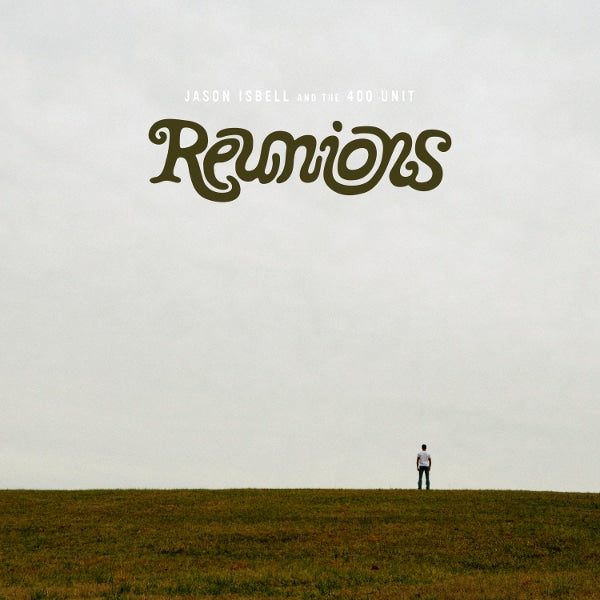
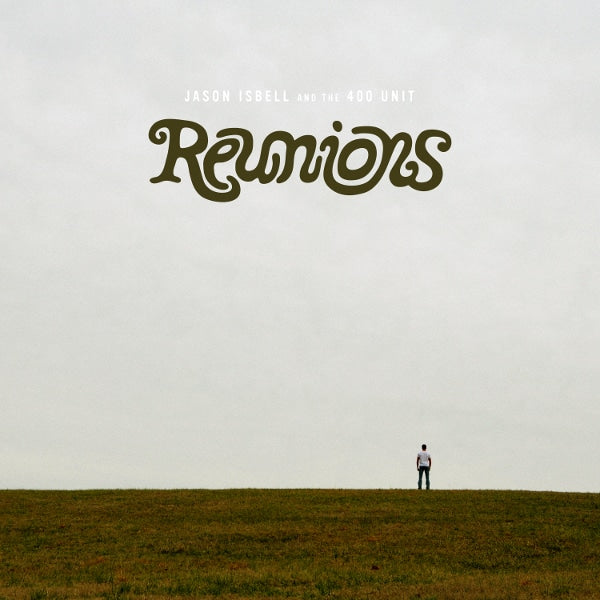
Two New Releases, and Three Catalog Titles Reissued
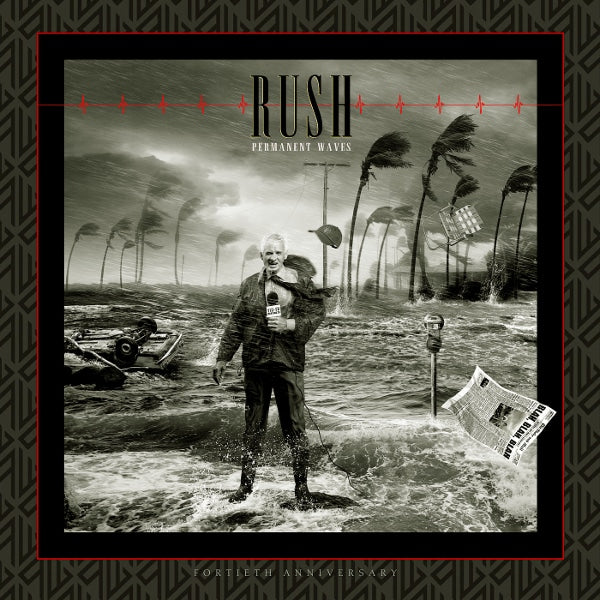
Rush – Permanent Waves – Fortieth Anniversary Edition
Permanent Waves was something of a departure for Canadian power trio Rush; it was their first record since the addition of drummer and primary lyricist Neal Peart that didn’t focus on lengthy, concept-based song structure. And the band were very close to their creative peak from a performance standpoint; a lot of Rush fans seem to think that at this point in the band’s history, they functioned both on album and onstage like never before. And the band chose to record Permanent Waves at Le Studio in Quebec, which then became their de facto base of operations for all studio albums to come, which definitely shaped the sound of their recorded output going forward. “The Spirit of Radio” became their highest-charted song at that point, which also helped garner new fans into the fold, and helped to sculpt the mold for song structure on subsequent releases.
Rush released a remastering of their entire catalog in 2015, with heavy emphasis on the 180-gram vinyl editions; I grabbed a handful of titles I couldn’t live without, like 2112, Permanent Waves, and Moving Pictures. Those LPs were a revelation in terms of sound quality — the pressings were quite nearly perfect; especially considering that my original issue LP of Permanent Waves had one of those endless loop repeating scratches that wouldn’t allow the tune to advance beyond a certain point on side 2. Anyway, the new 40th Anniversary release uses the same remastered tapes from the 2015 LP pressing, so if you ended up getting one of those, there might not be much of an incentive to grab the new release based on that information. However, the real reason for die hard fans to grab this set — or at least have a listen in glorious 24/96 sound on Qobuz or Tidal — is the plethora of previously unreleased live tracks included from the Permanent Waves era of the band. The set shows the band in absolutely top form, and includes well over an hour’s worth of material that spans the breadth of the band’s recorded output up to that point. And the live bonus material has all been remixed and remastered by longtime Rush producer Terry Brown, so the sound quality is absolutely superb.
The three LP set clocks in for purchase at around $70 USD, while the 3-LP/2 CD with slipcase and 40-page hardbound book will set you back closer to $180 USD — it’s probably mostly for hardcore fans only. Although the 3-LP set isn’t too much of a financial stretch for diehard vinyl guys. I did all my listening to the 24/96 tracks on Qobuz, and the sound quality was superb, especially with the live tracks — it’s an absolute must-hear for true Rush fans. Very highly recommended.
Mercury Records, 3-LP box, 3LP/2CD box (download/streaming from Qobuz, Tidal, Amazon, Google Play Music, Deezer, Apple Music, Spotify, Pandora, YouTube)

Jason Isbell and the 400 Unit – Reunions
Jason Isbell is one of those hard to categorize musicians, falling somewhere in between the Alternative Country/Americana/Southern Rock genres; his newest album with his group the 400 Unit probably hews much closer to true Southern Rock than any of his previous releases. He was a member of the group Drive By Truckers for six years and three studio albums, and was a major contributing songwriter to the band. While the official 2007 press release from DBT leader Patterson Hood regarding Jason Isbell’s departure from the group described the parting as “amicable,” a New York Times interview with Isbell that followed very quickly afterwards gave a completely different slant, leading many to believe he was forced out of the group. Anyway, Isbell didn’t waste any time, recording a solo album shortly afterwards, and then forming his current group, the 400 Unit in 2009. The group is named after the psychiatric ward of the Eliza Coffee Memorial Hospital in Florence, Alabama; the ward was locally known as the 400 Unit, and Isbell hails from nearby Green Hill. Jason Isbell & the 400 Unit have very quickly collected a slew of Americana awards and Grammys; he’s easily eclipsed his work with Drive By Truckers and garnered substantial critical praise, and was recently named an official artist-in-residence at the Country Music Hall of Fame.
The new album, Reunions, is the 400 Unit’s sixth studio release, and was recorded just prior to the onset of the Coronavirus pandemic, but the songs read like they could have been taken from the pages of today’s headlines. The opening “What’ve I Done to Help” tells a tale of folks whose lives are in a constant state of flux, not knowing which road they should take in times shrouded with absolute uncertainty. Sounds not at all unlike the chaos so many are currently facing in our new reality, huh? “Dreamsicle” chronicles how children are left to deal with the turmoil they often face as their parents divorce; other songs like “Running With Our Eyes Closed” and “Be Afraid” hew even closer in tone to the calamities so many are currently facing. And “It Gets Easier” deals with addiction and recovery — a topic Isbell is all too familiar with — although the song’s refrain doesn’t offer a whole lot of hope: “it gets easier…but it never gets easy.” The song could just as easily take on the context of our current world situation, and whether anything we know will ever return to anything resembling its previous state. Although many of the songs are basically pretty harrowing, Jason Isbell’s plaintive vocals give everything here a feeling of hope, which is what we all really need in these troubling times.
All my listening was done via the excellent 24/96 stream from Qobuz — Reunions is a brilliant album, and the recorded sound was nothing short of superlative. I was recently turned onto Drive By Truckers in a review experience for another media outlet, but I haven’t gone far enough back to hear any of Jason Isbell’s work — after my exposure here, I’m ready to dig much deeper into both DBT and the 400 Unit’s back catalogs. Very highly recommended!
Southeastern Records, CD/LP (download/streaming from Amazon, Qobuz, Tidal, Google Play Music, Apple Music, YouTube, Spotify, Pandora, Deezer)

Dire Straits – Love Over Gold
1982 saw the release of Dire Straits’ fourth studio album, Love Over Gold; while the poppy, irrepressible vibe of “Industrial Disease” was what first caught the airwaves, it was more likely the fourteen minute tour-de-force of “Telegraph Road” that really sucked everybody in. I don’t really need to go on ad nauseum about my impressions of the songs; you’ve heard them countless times and know them all extremely well. Even though, as time has gone along, the two songs I now most likely listen to from this excellent album are “Private Investigations” and “Love Over Gold.” But I would like to talk a bit more about the recorded history of Dire Straits’ catalog issues.
This is pretty much the purchase timeline for my acquisition of a typical Dire Straits catalog issue: Original LP – Import LP – CD – remastered CD – remastered reissue CD – import CD – reissue 180 gram LP. Yeah — I’m one of those guys who has gotten sucked into buying just about every available format, desperately in search of the best possible sound for any given title over the years. So over the nearly forty years since its release, I’ve bought Love Over Gold at least seven times since its original incarnation in 1982. Original LP: pretty good; import LP: surprisingly not so good; CD: meh; remastered CD: pretty good; import CD; pretty good; reissue 180 gram LP: very good. And in recent years, with the ever-increasing improvement in digital-to-analog conversion, with better-than-ever CD players and better-than-ever streaming, I’ve almost gotten to the point where I’m generally very satisfied with the quality of playback I’m getting with most Dire Straits’ (and just about everybody else’s) catalog titles simply streamed across my stereo setup.
So why in God’s holy name would I plunk down $30 for yet another reissue — this time in the all-but-dead SACD format? I guess the answer is that I got a new Yamaha SACD unit last year, which I’ve really been enjoying a lot — and the overwhelmingly positive reviews for the new Dire Straits’ SACD titles on Mobile Fidelity Sound Lab. I probably hadn’t bought an MFSL disc of any kind in almost twenty years! Call me a fool, but I decided to test the waters with two titles I decided I couldn’t live without, Love Over Gold and the eponymous first album. Here goes!
The SACD layer of the disc is undeniably the finest sound I’ve ever heard this record offered in, and is maybe the best MFSL disc of any kind I’ve ever owned. My early experiences with MFSL in the seventies were a mixed bag — the LP pressings were always absolutely superb, but I felt they took few liberties with the tapes, and the resultant LPs never sounded quite the same as the catalog issues. From a content standpoint; there were often different edits, and odd fade outs that for me, often ruined the experience, regardless of the quietness and greatly improved sound of the MFSL LPs. When MFSL died and was eventually reborn, I feel like perhaps they’ve done a better job with not taking too much artistic license, and trying to stay true to the artistic intentions of the originals.
For example: one of the things I really liked about the remastered catalog CDs from the early 2000’s was that the songs didn’t fade to digital black in between the tunes; there was a very gentle hiss, which gave very much the continuity and impression of listening to an LP. Even though you were listening to a CD, or much later, a digital rip of that CD. The new SACDs don’t follow that script, exactly, but they do offer a very subdued and gradual fade out — which is much more acceptable — especially when listening through tube equipment, which is the new norm for me. And the overall sound quality betters everything I’ve ever heard, even all LP incarnations; the SACD layer has an organic, more analog quality that places it absolutely in the same conversation with LP playback. I haven’t heard the new LPs, but if they’re anything like this, they’re probably pretty spectacular.
By the way, I did listen to the CD layer of the discs, and while they definitely sound much better than any previous versions, they’re not anywhere in the same league as the SACD’s DSD layer. This is the current state-of-the-art for these recordings — there’s no high-resolution streaming currently available, so if you really love this music, open your wallets. Very, very highly recommended!
Mobile Fidelity Sound Lab/Warner Brothers Records, Hybrid SACD/45 RPM LP (download/streaming not currently available for this title)

Dire Straits – Dire Straits
I’ve already given all the intended exposition with the Love Over Gold review above; what I’ll say about Dire Straits is that it may be my favorite of all the studio albums. I’m particularly smitten with a couple of tunes, the opening “Down to the Waterline,” where the opening guitar figures and Pick Withers’ cymbal crashes maybe have more impact and realism here than on any previous versions. Those cymbals just absolutely shimmer across the soundstage as the song crashes into the main theme — the effect is mesmerizing. And I also love the tune “Wild West End,” with it’s very laid back, Mark Knopfler kicking back, enjoying his coffee as the local scene unfolds around him vibe. This album absolutely slayed me in 1977 in terms of the performances, but I always have been relatively underwhelmed by the sound quality, especially on LP — I always felt the original LP was especially bass-shy.
The MoFi SACD does not disappoint — the SACD layer is magnificent in every way possible, and the bass content of the disc is deeper and tighter than I’ve heard on other formats. The CD layer is really good, too, but just can’t hold a candle to the SACD for its improved clarity and more organic overall presentation; it’s almost like the CD is monochromatic, and the SACD is technicolor. This disc is very highly recommended! I’ll probably go ahead and spring for the remaining titles in the series.
Mobile Fidelity Sound Lab/Warner Brothers Records, Hybrid SACD/45 RPM LP (download/streaming not currently available for this title)
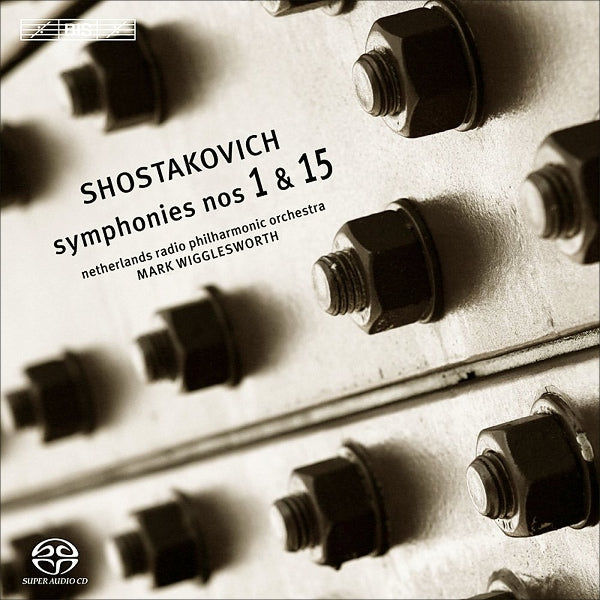
Mark Wigglesworth/Netherlands Radio Philharmonic Orchestra – Shostakovich Symphonies Nos. 1 & 15
In Copper Issue 100 I reviewed a Susanna Malki Bartok SACD disc; a reader pointed out to me that I was incorrect in my assessment that the SACD was sourced from a DSD recording. I had an interesting exchange with him afterwards regarding BIS SACDs; at the time when I first became involved with SACD and reviewing classical music titles over at Audiophile Audition (2002-2010), I was able to get my hands on quite a few SACD discs on the BIS label. Which, at the time, were all recorded in DSD, or transferred from analog sources to DSD. The reader pointed out to me that all the current (and recent) output of BIS SACDs were transferred from 24/96 PCM sources, and my later investigation bore that out. Regardless, the sound quality of the Bartok SACD disc was superb; maybe it’s got something to do with the transfer to DSD in the process — a lot of current high-end DACs (PS Audio comes to mind) and digital music playing programs convert everything to DSD, and the results seem to be quite excellent.
Anyway, it gets even murkier; I ended up with some extraneous money in an Amazon account, and ordered a couple of new discs recently, including, this SACD, the Shostakovich Symphonies Nos. 1 & 15, featuring conductor Mark Wigglesworth and the Netherlands Radio Philharmonic Orchestra ($12). I’d downloaded the 16 bit/44.1 WAV files for this from Naxos (I get reviewer service through them) a while back, and ended up getting the entire symphonic cycle — which I now consider as maybe the finest collection of Shostakovich symphonies extant. The performances are simply off-the-charts great, and the sonics are staggeringly good — it’s almost overwhelmingly entertaining, listening to any of these recordings. I decided that I wanted to get the SACD of this particular performance; it’s kind of become one of my go-to discs for classical music evaluation, and I really wanted the higher resolution disc, for posterity, if no other reason. I generally always find SACDs to be a great improvement over CDs — or CD-quality downloads.
So the disc showed up after about two weeks (Coronavirus monkeying with the business model/shipping industry), and I wasn’t disappointed — the SACD was better in every way possible than the WAV files that I’d converted to uncompressed FLACs using dBPoweramp. It was a win-win in every possible aspect for me.
Until recently, when in a moment of shelter-in-place boredom, I visited the Audio Asylum forum (usually a bad idea), and a poster there was questioning that BIS SACDs were from 24/96 origins. I read through the entire thread, and at some point, someone responded that eClassical.com, which is owned by the same company that owns BIS, posts all the information regarding all performances available for streaming. And that some of the BIS performances actually originated from 16/44.1 files! Convinced that bit of information had to be fiction, or at least misguided at best, I started investigating — sure enough, many of the BIS titles available for download or sale as SACDs there are listed as being sourced from 16/44.1 or 24/44.1 tapes! With this one being from a 24/44.1 original session — I reached out to BIS for confirmation, and got it fairly quickly — the online information was correct.
I know I’m opening a can of worms here — but the sound of this SACD exceeds that of the WAV files in every possible parameter — it’s gotta have something to do with the transfer to DSD that imparts an improved sonic character during playback. And I see tons of commentary online from people who believe the bit rate is the most important factor in overall sound quality — and all these titles are sourced from 24 bit tapes, so that’s a good thing! Anyway, call me a fool, if you wish — I’ll probably be ordering more of these BIS SACDs in this Shostakovich cycle. If they sound anywhere nearly as remarkable as this one, it’ll be money well spent. YMMV, as always, but in my book, very highly recommended!
BIS Records, hybrid SACD (download/streaming via Tidal, Qobuz, eClassical)
Header image courtesy of Wikimedia Commons/Abby Gillardi.

